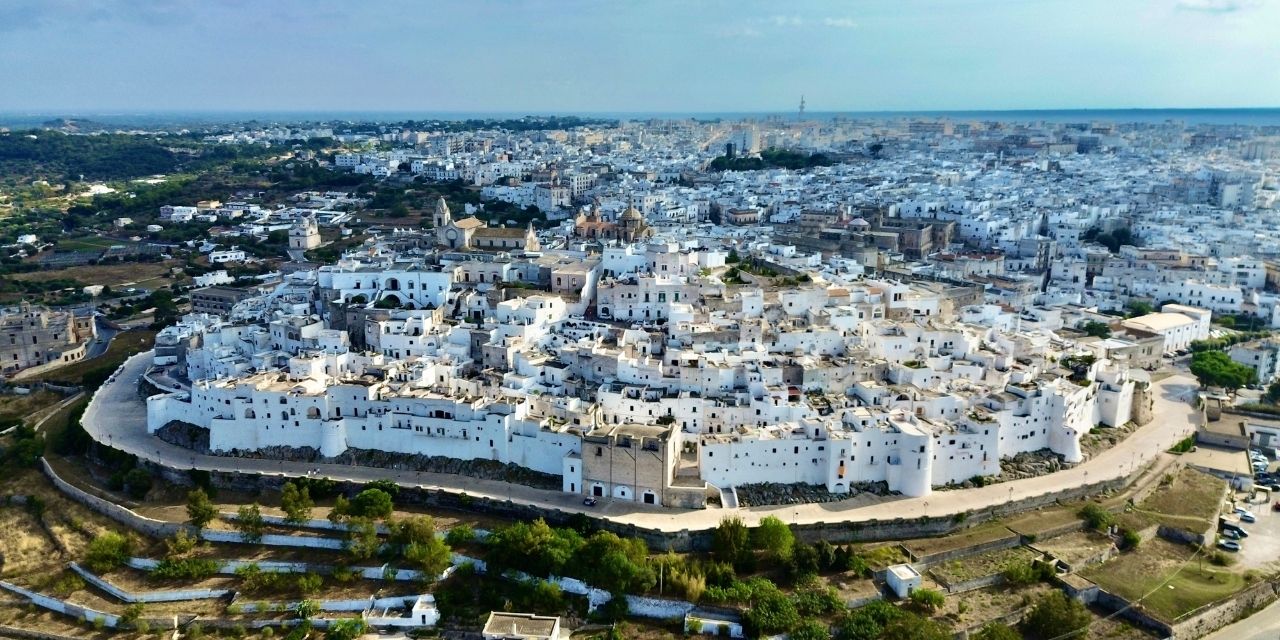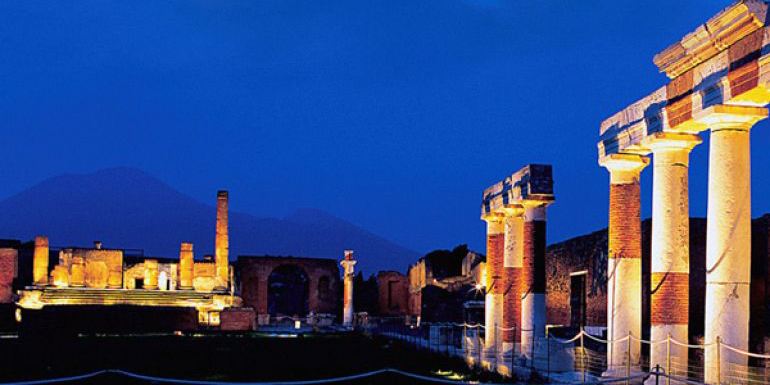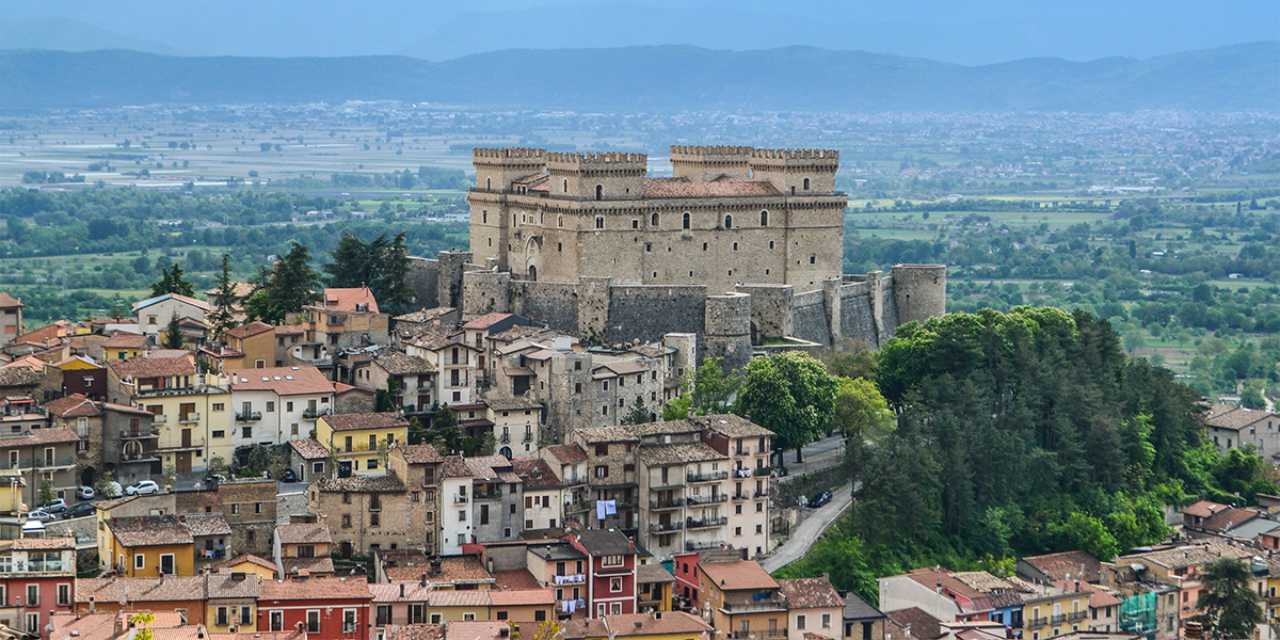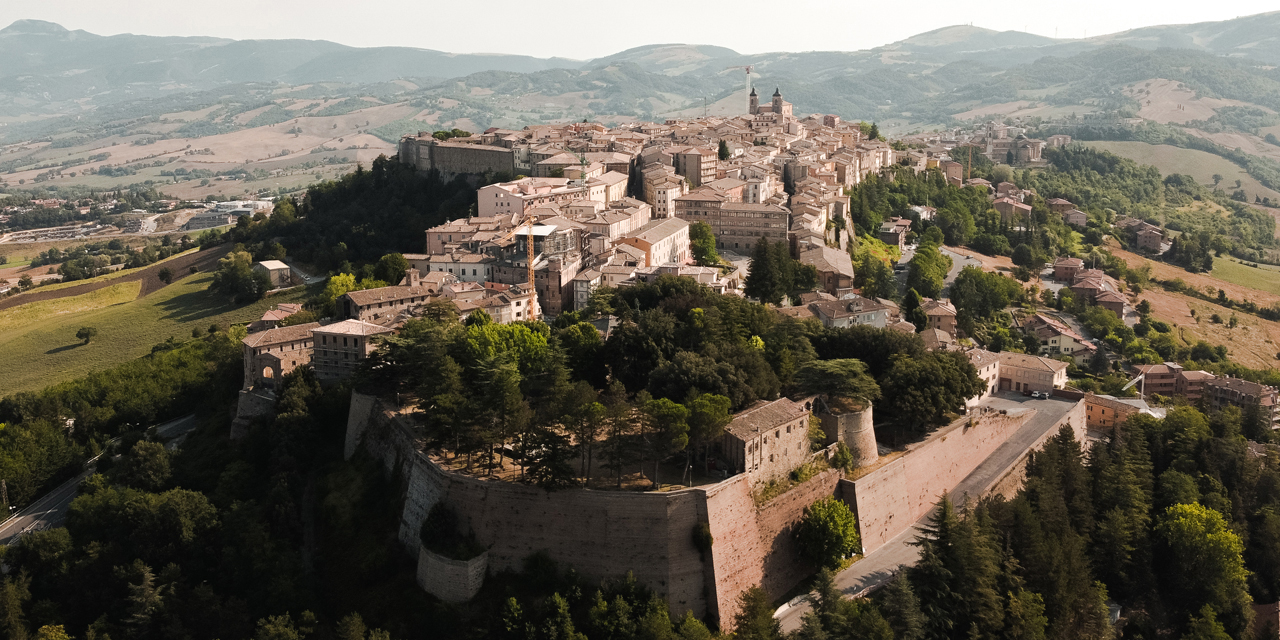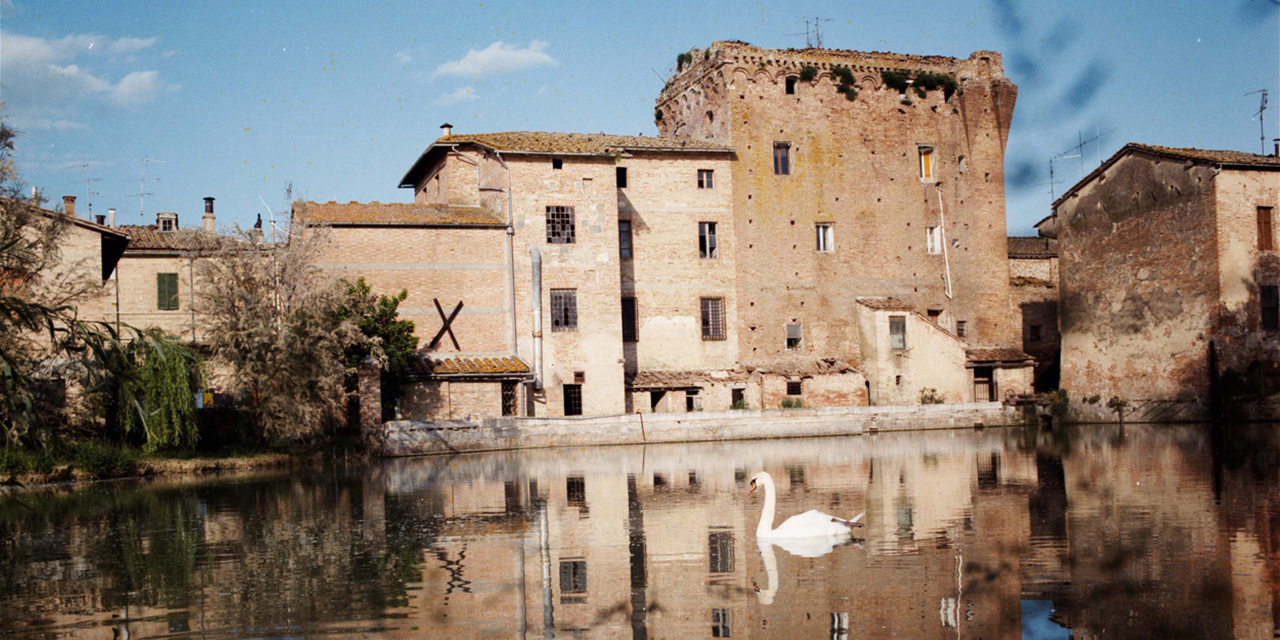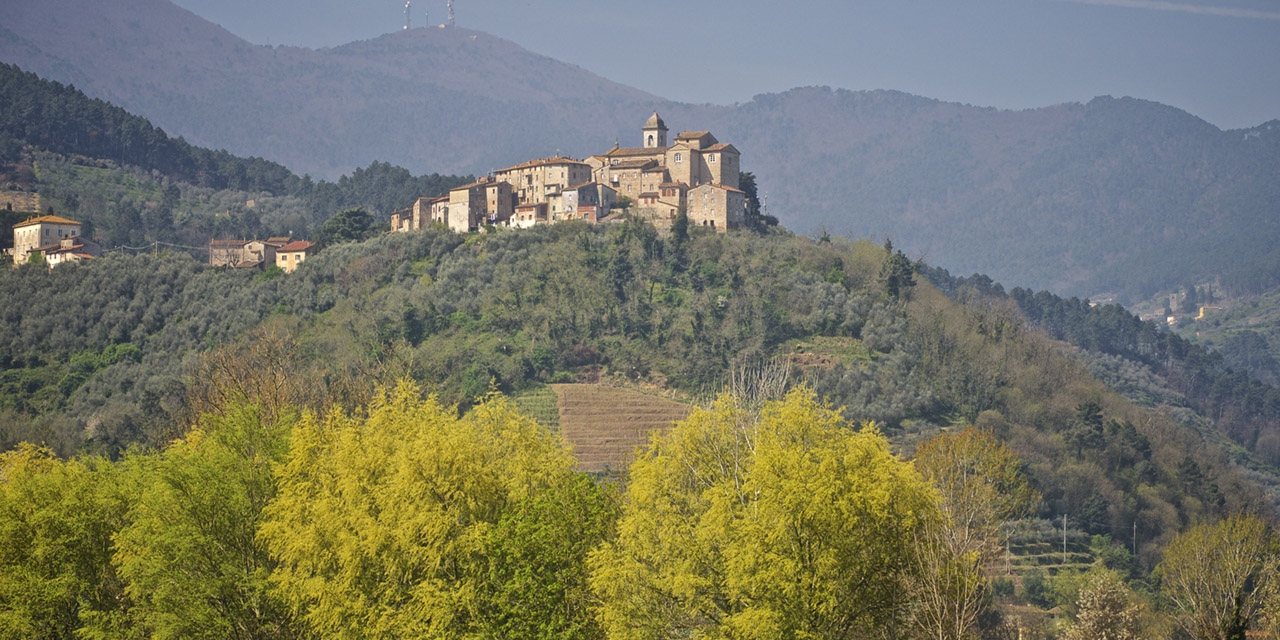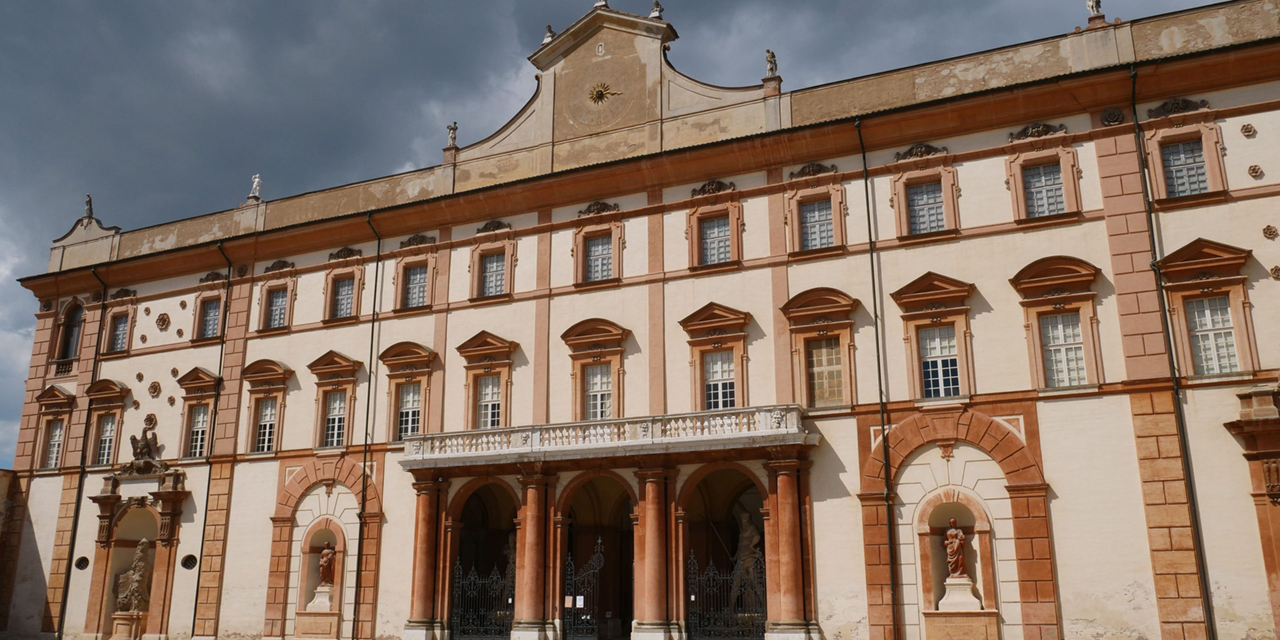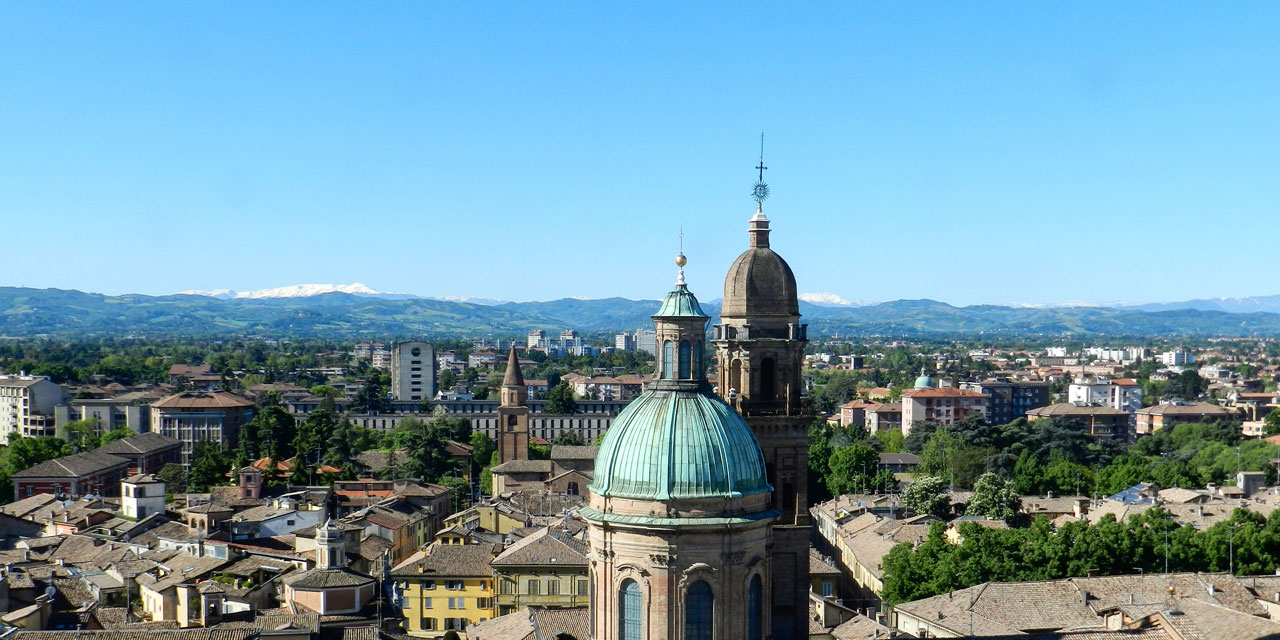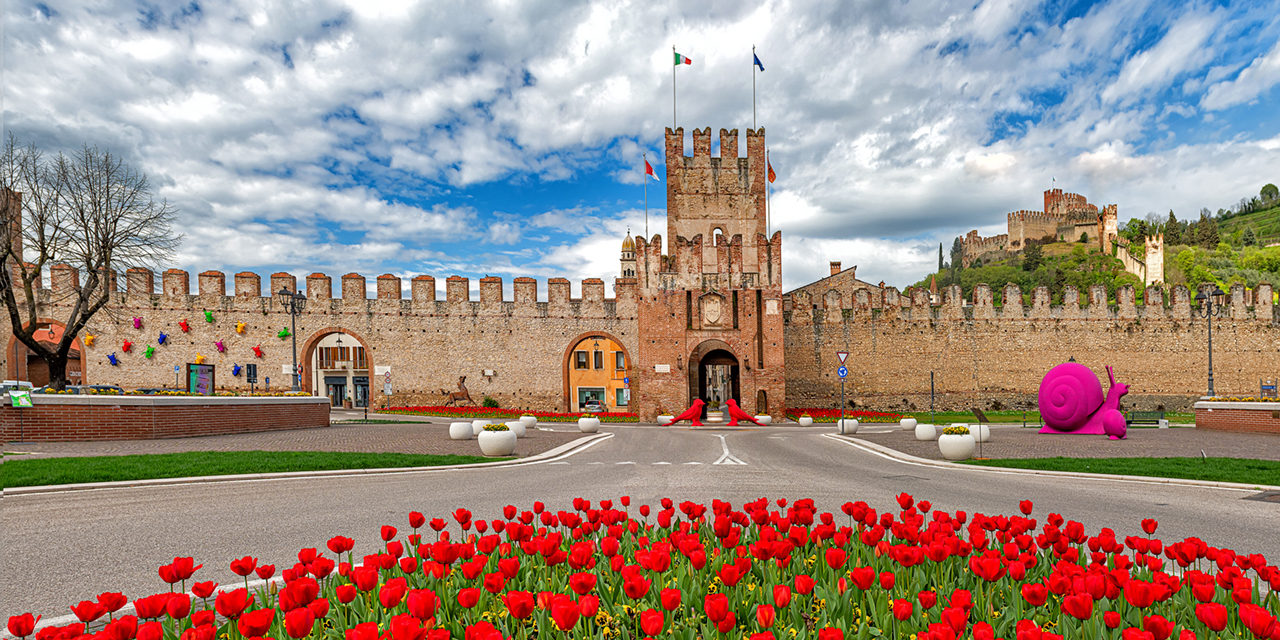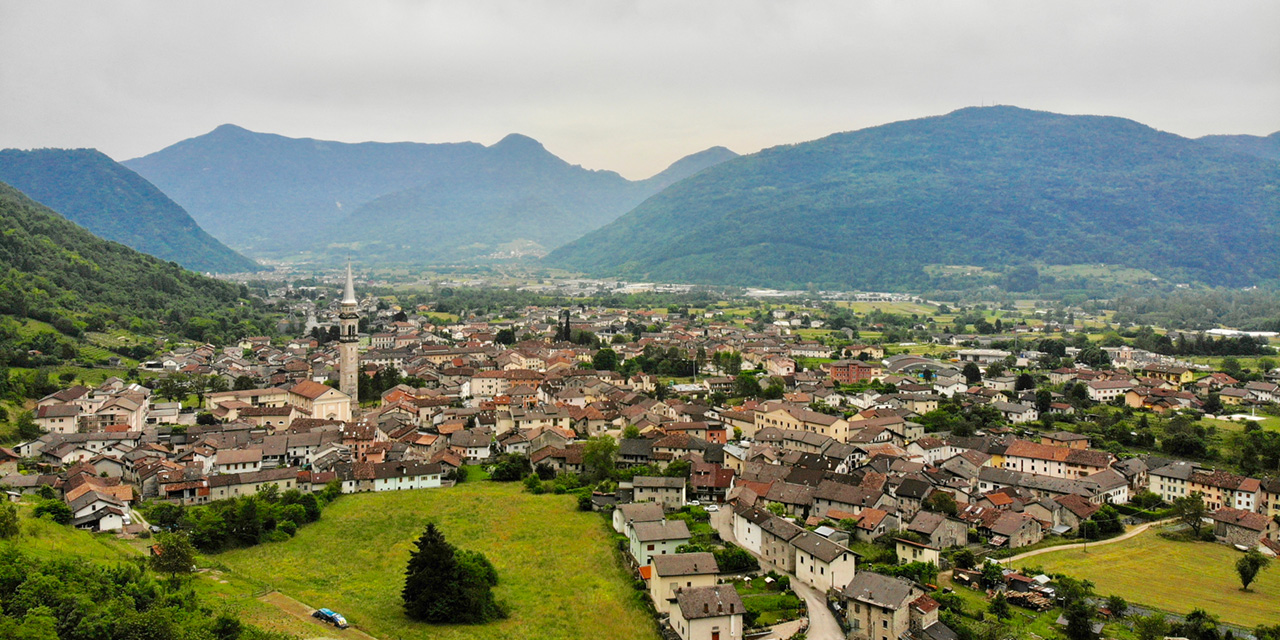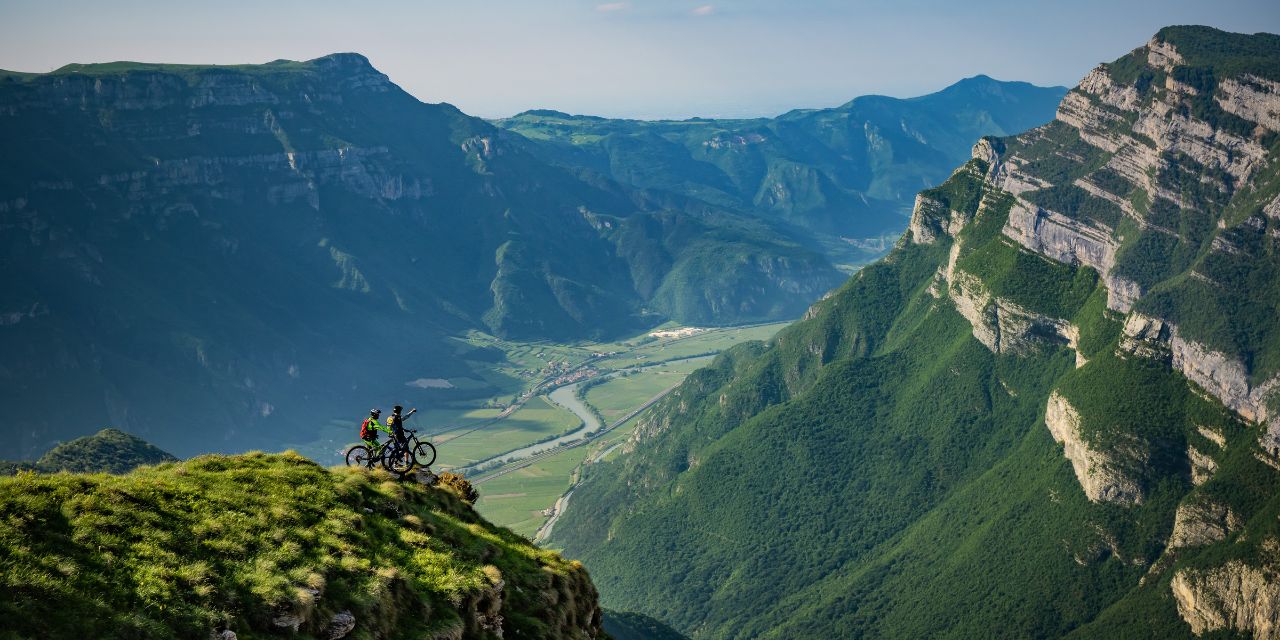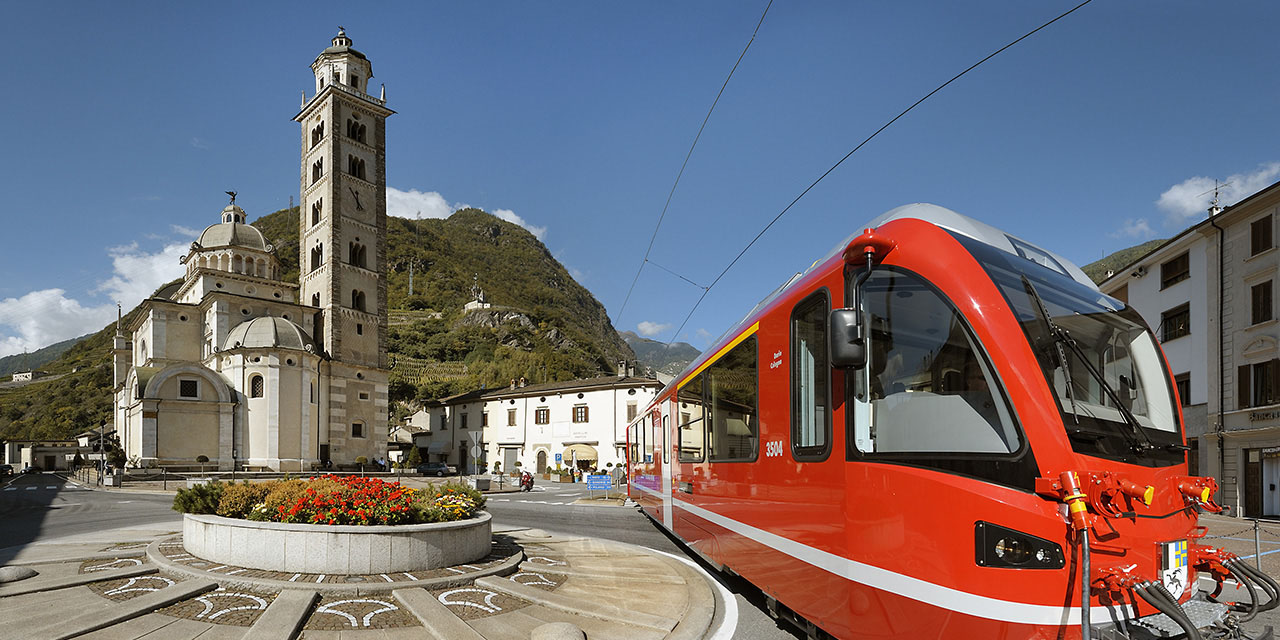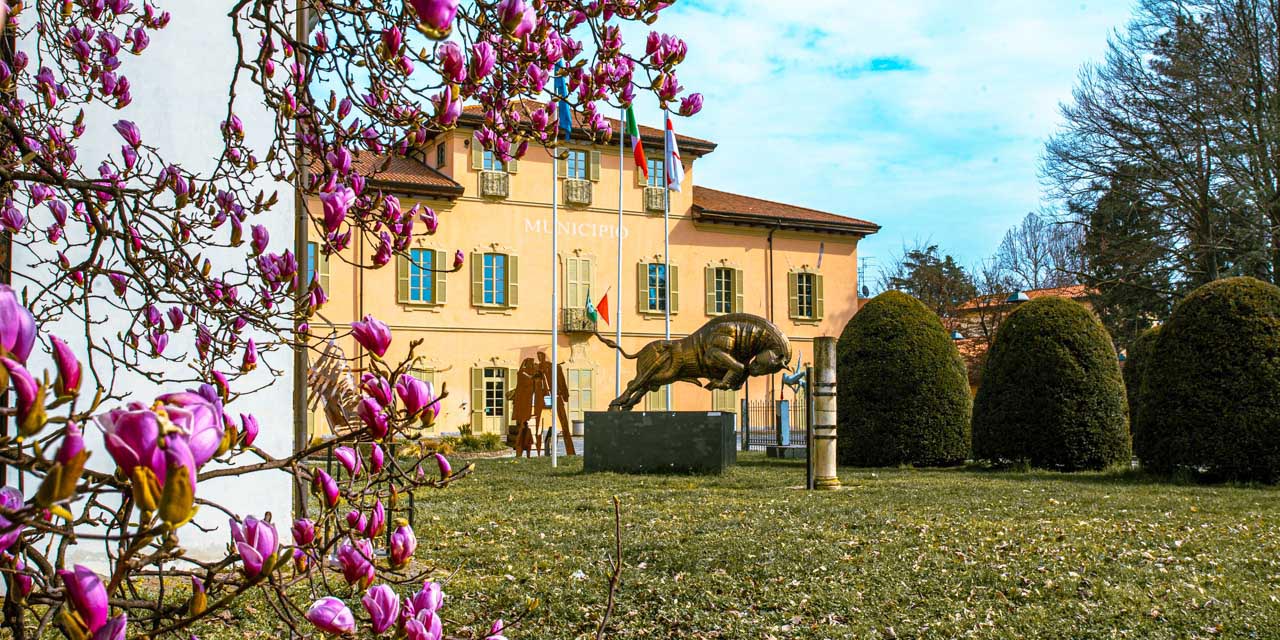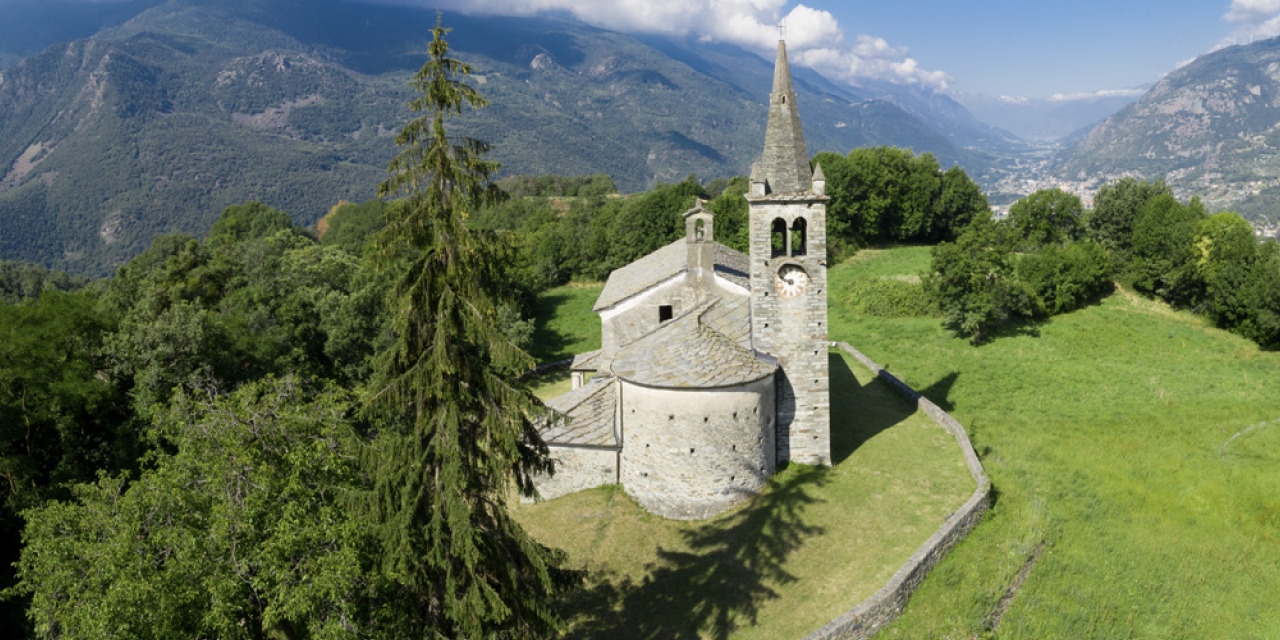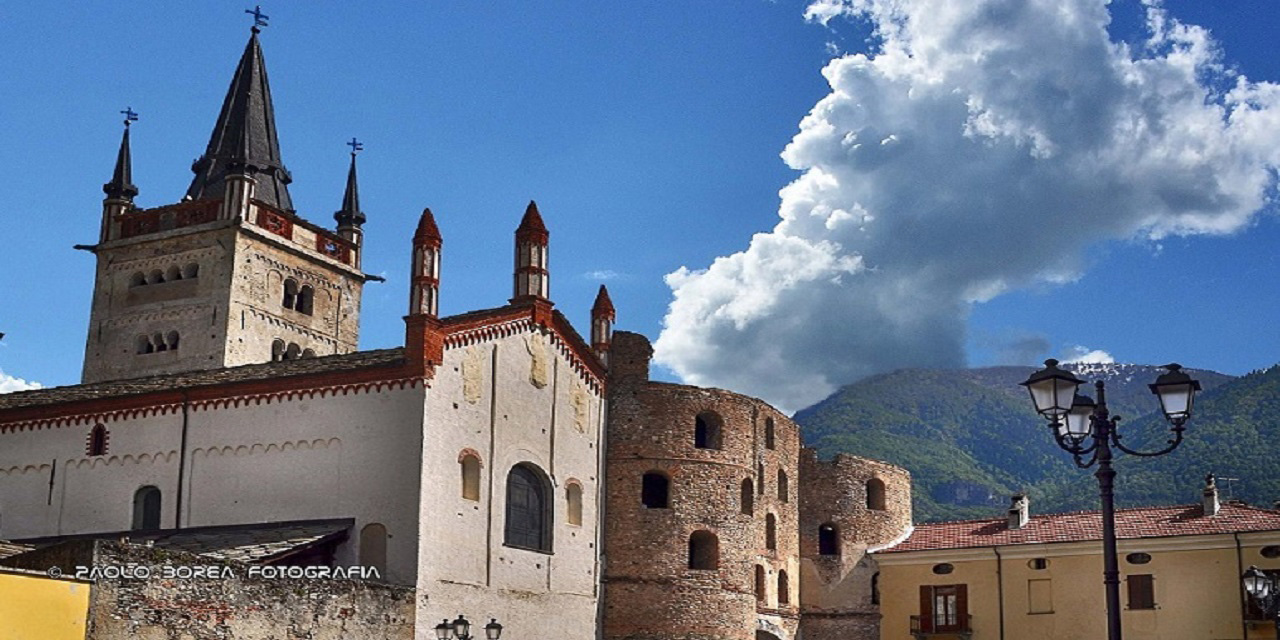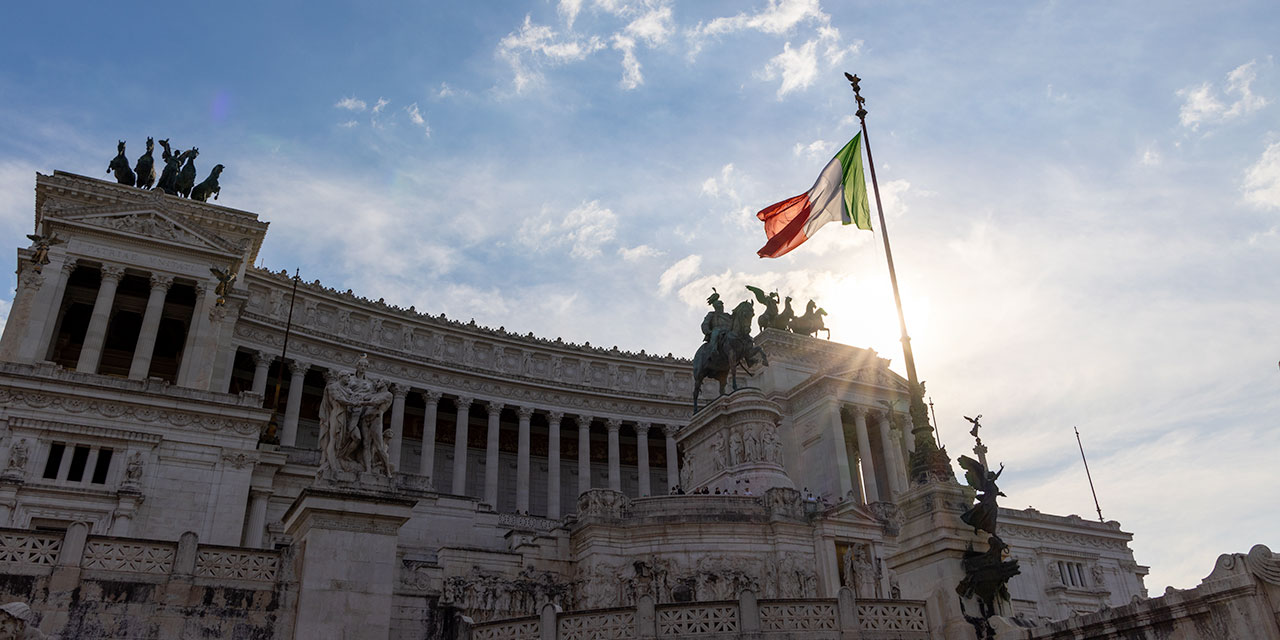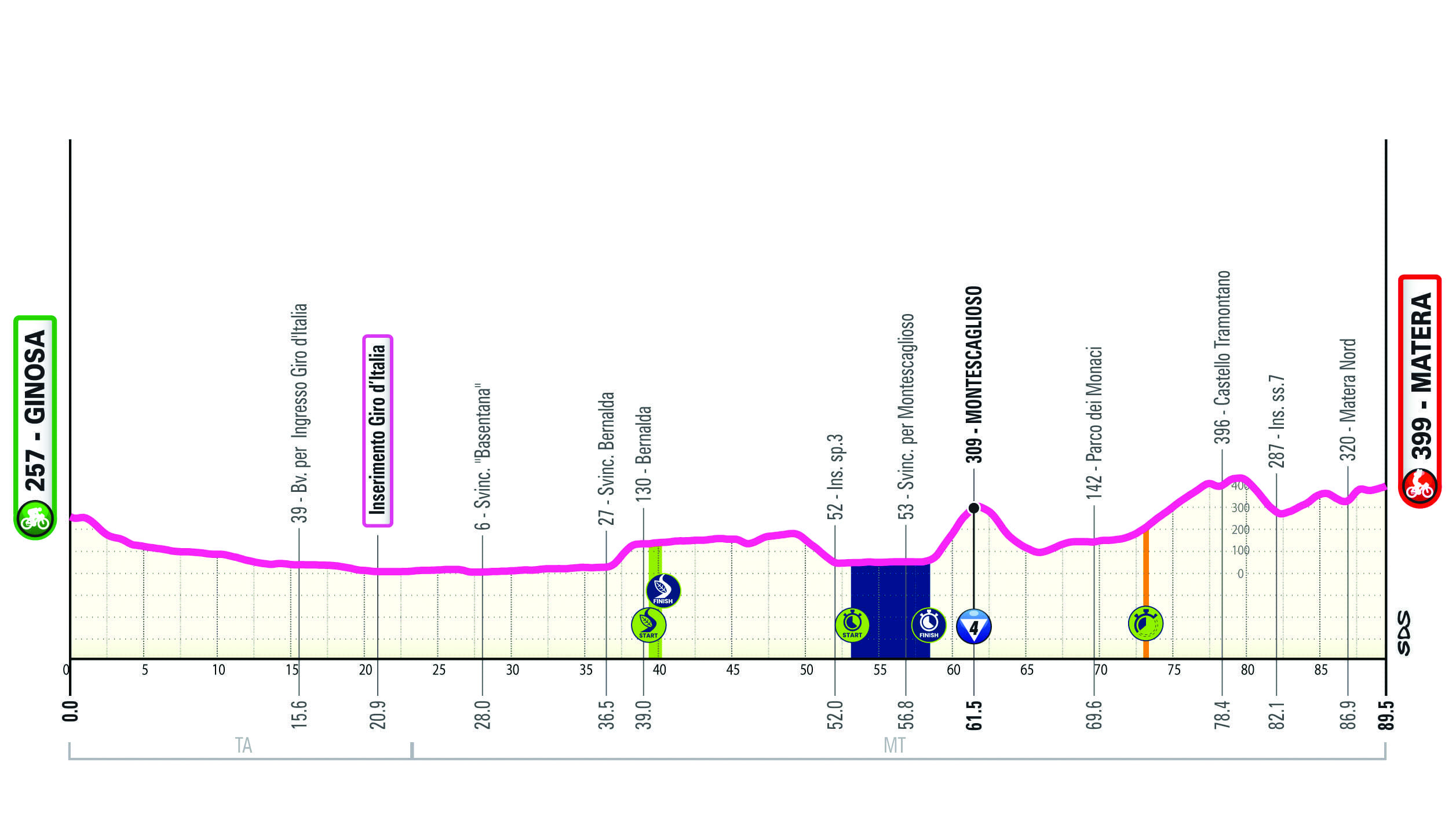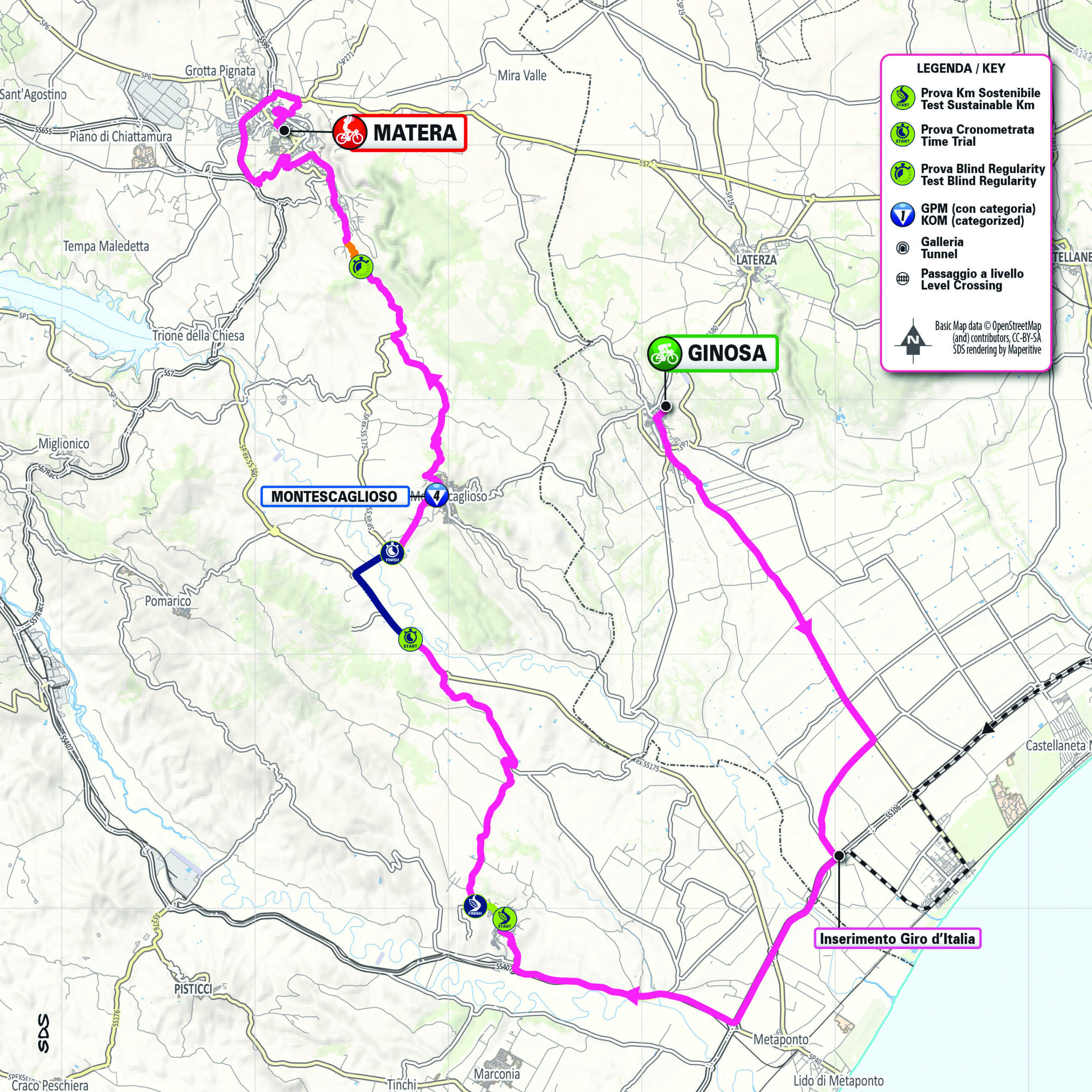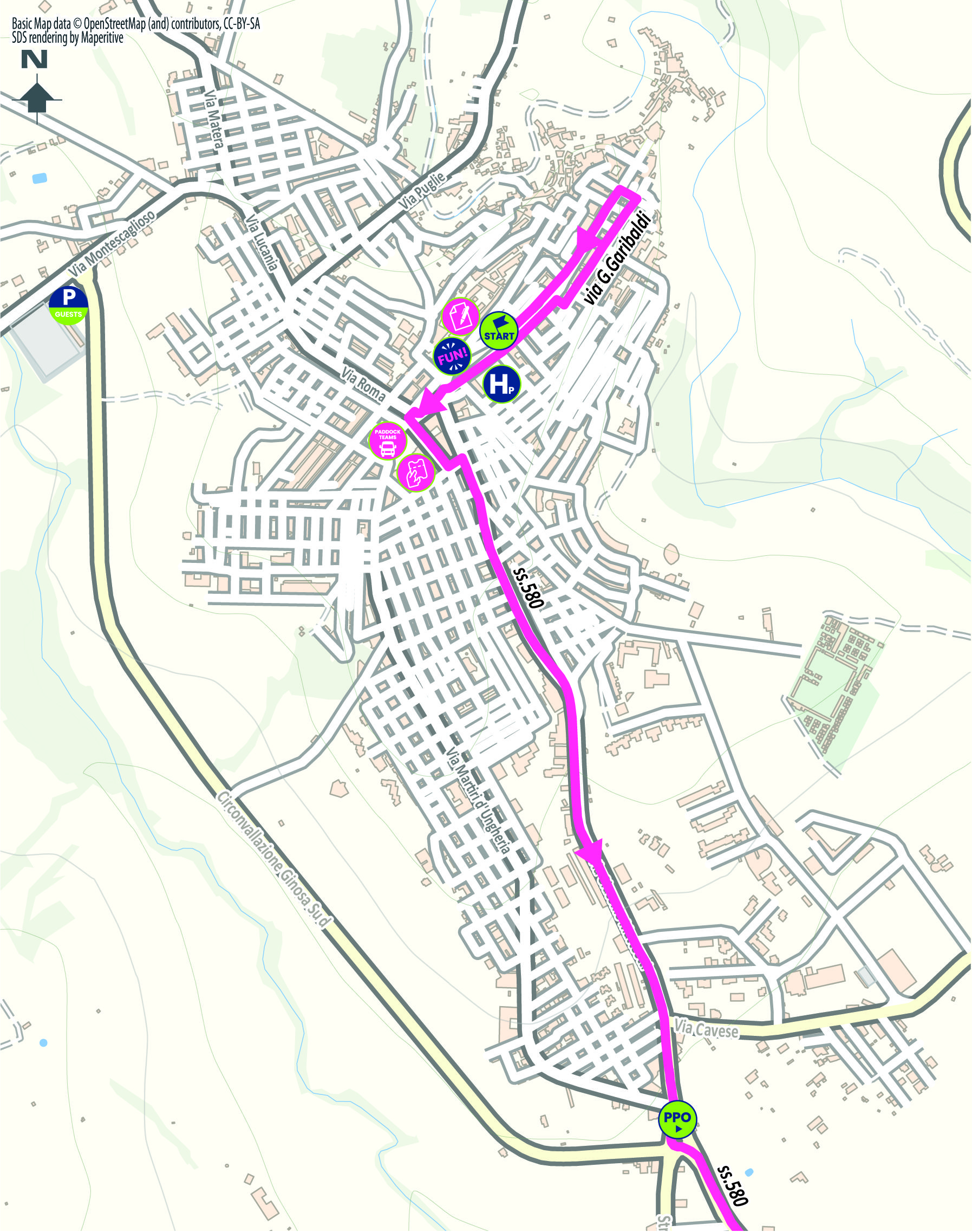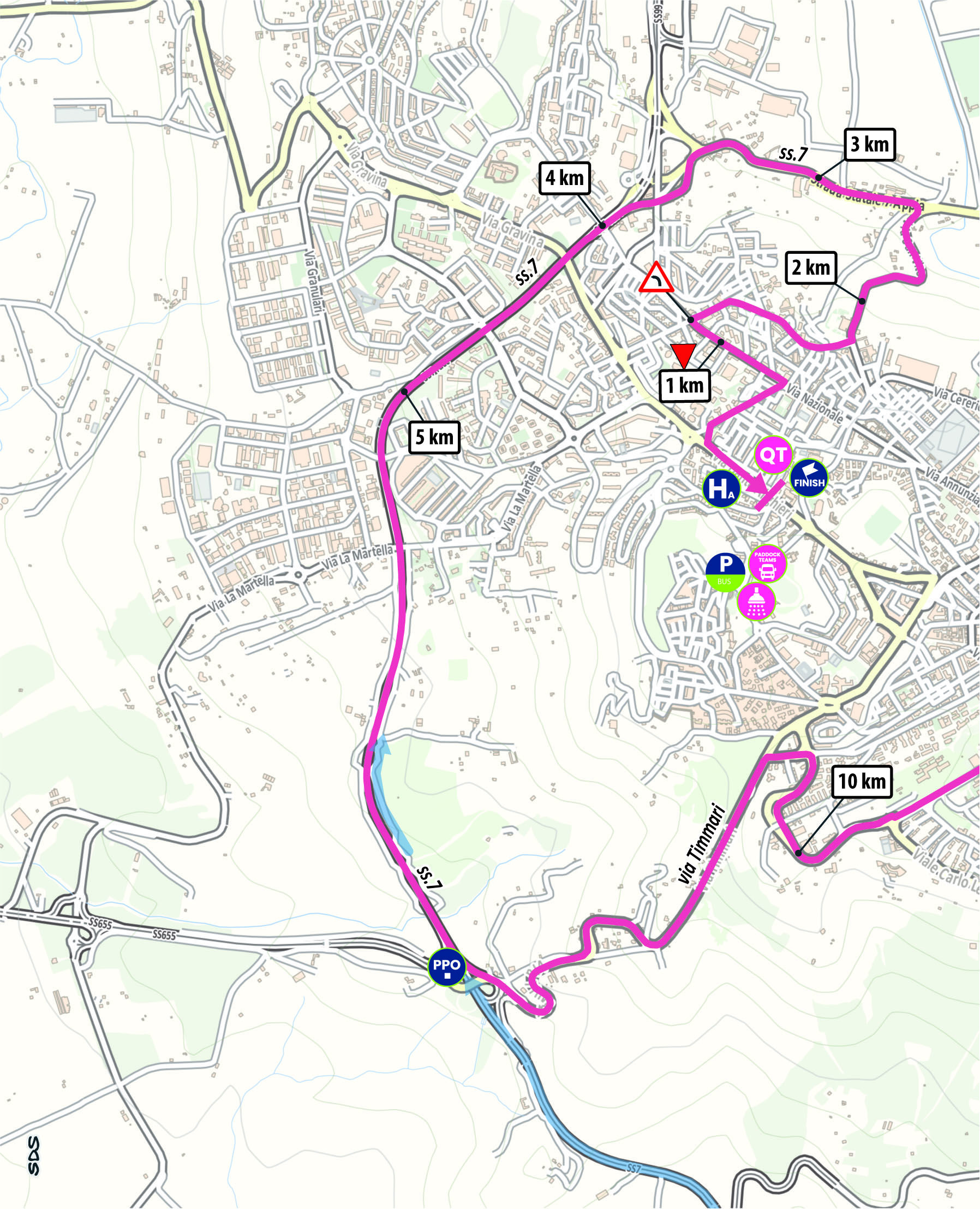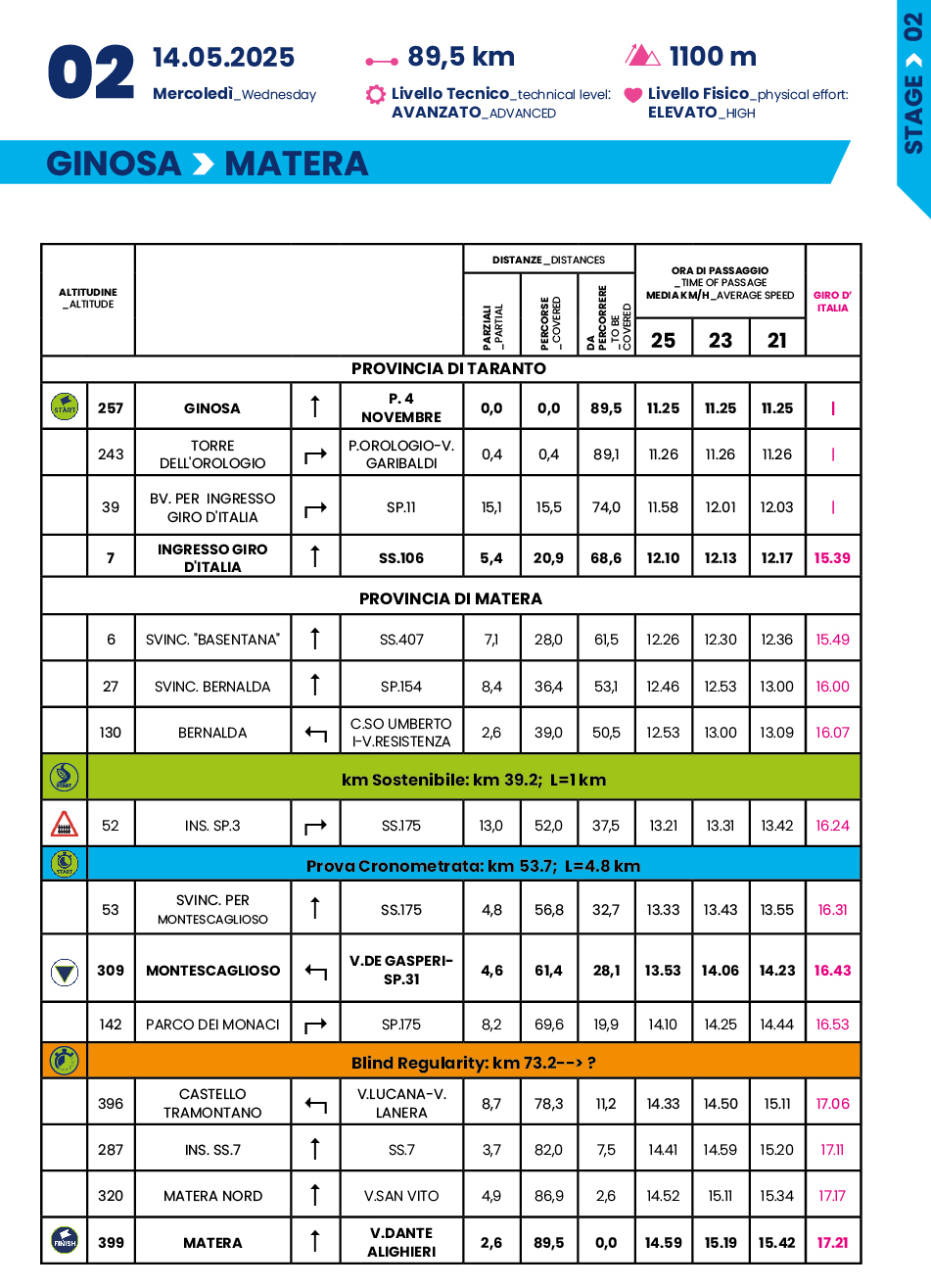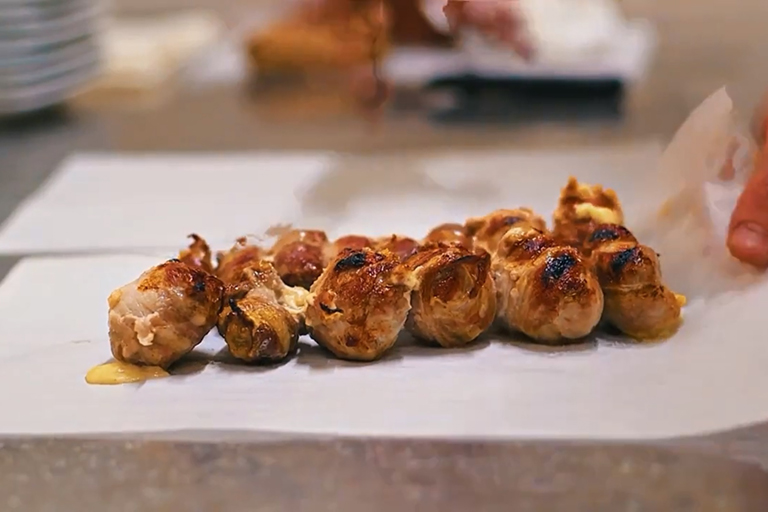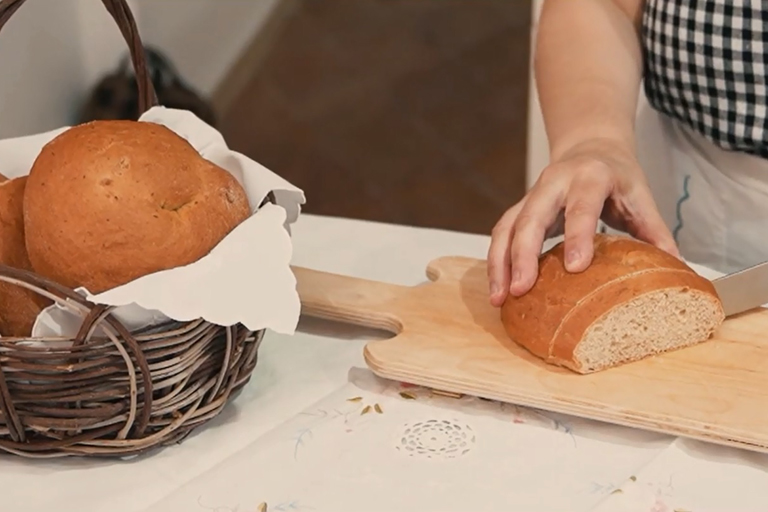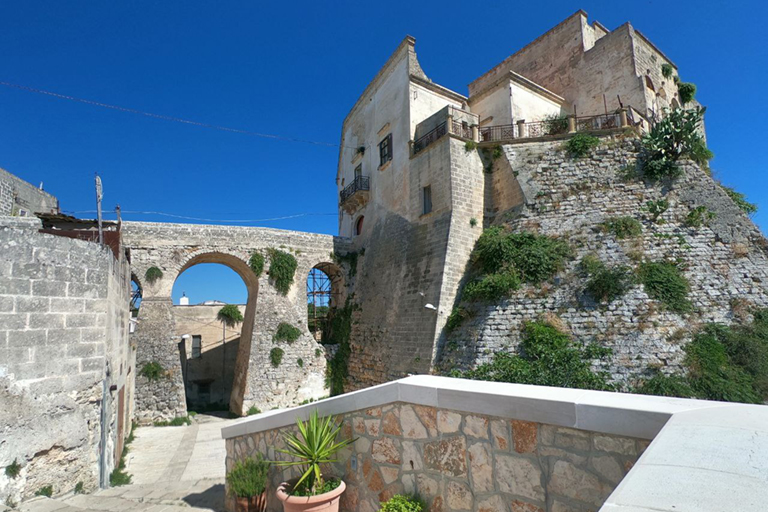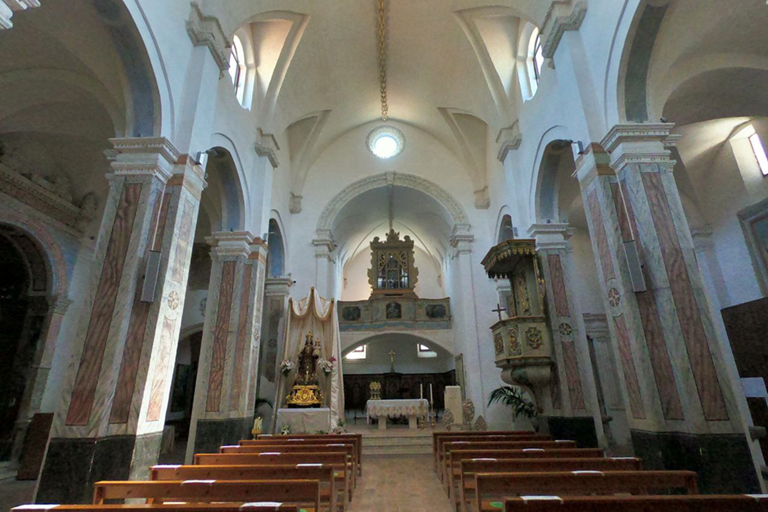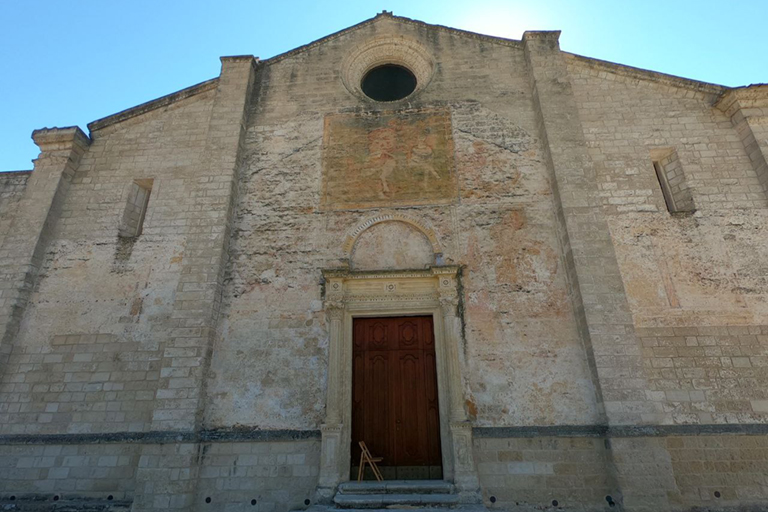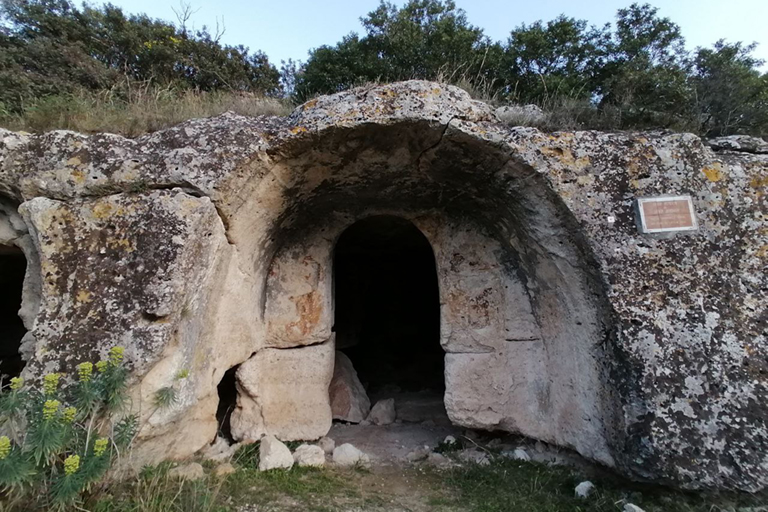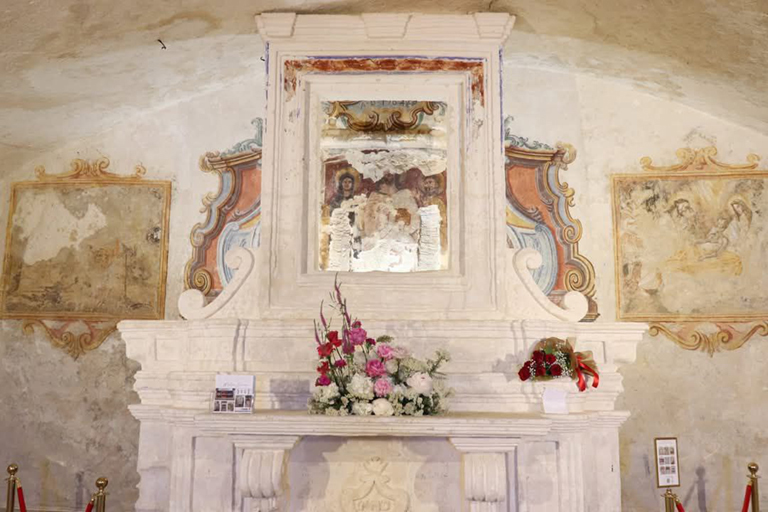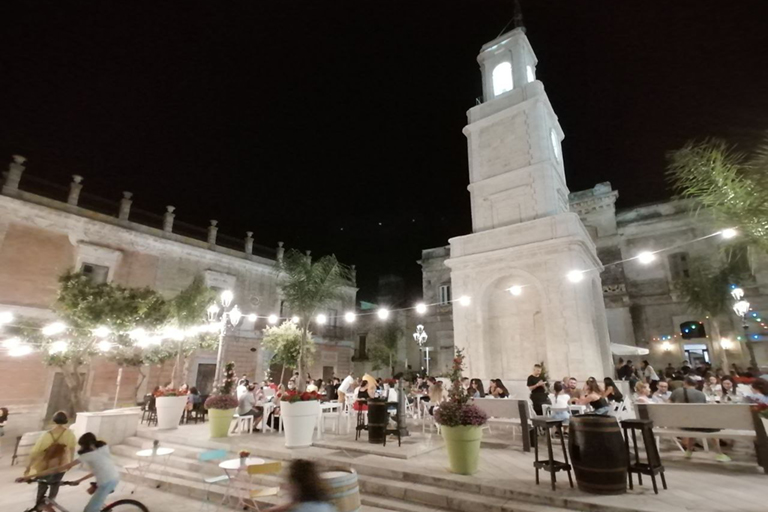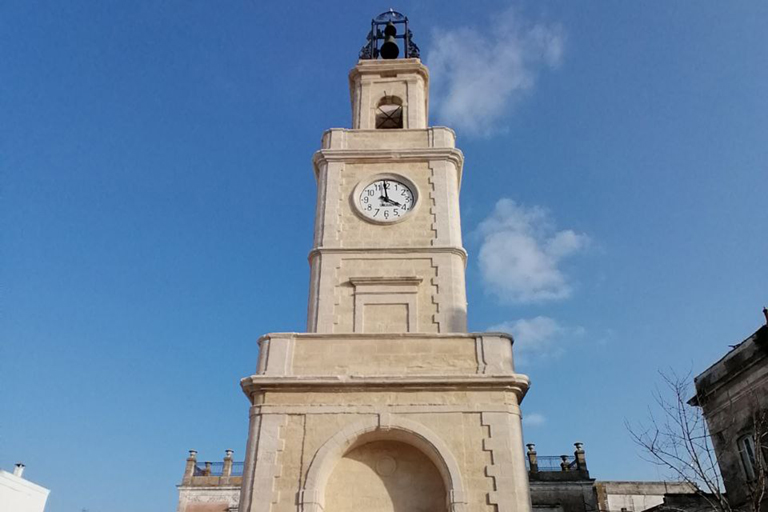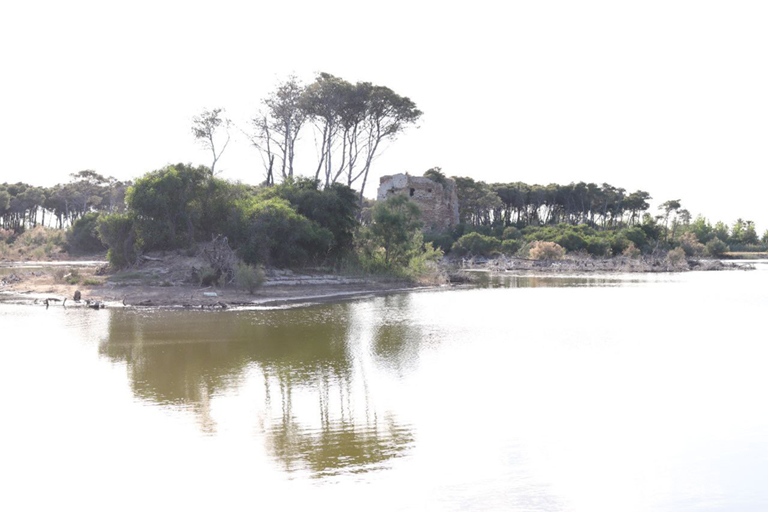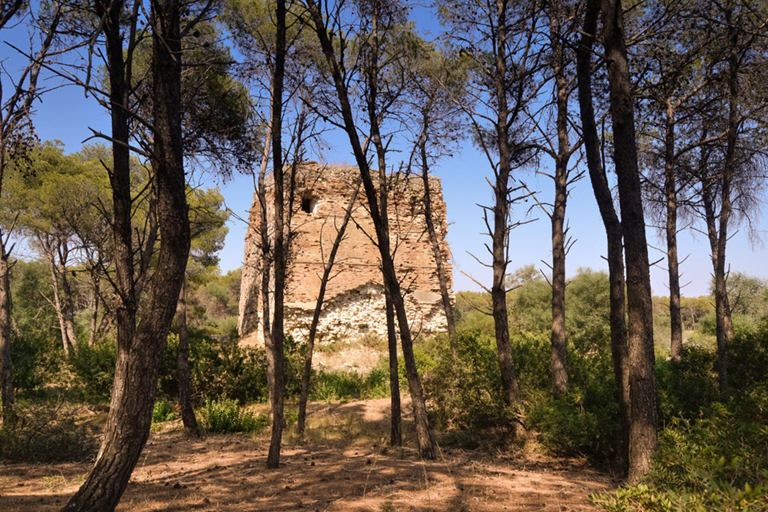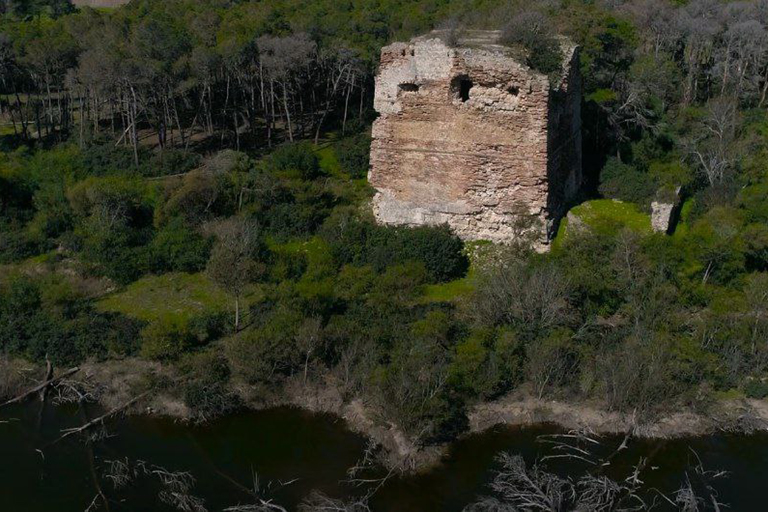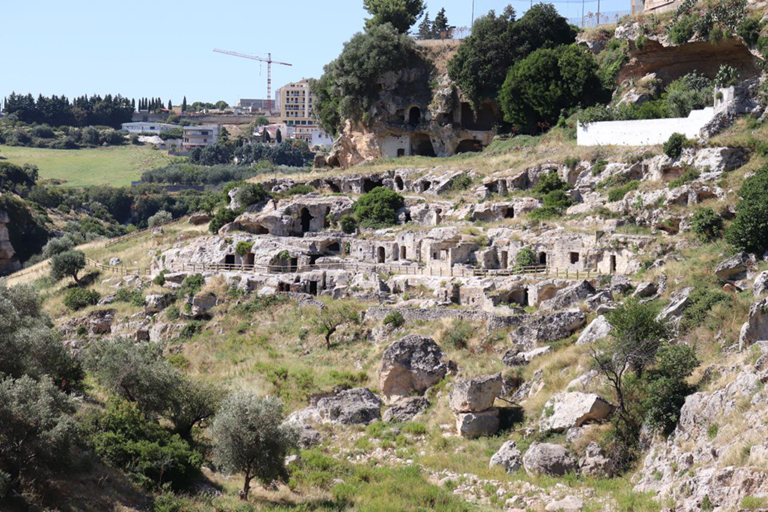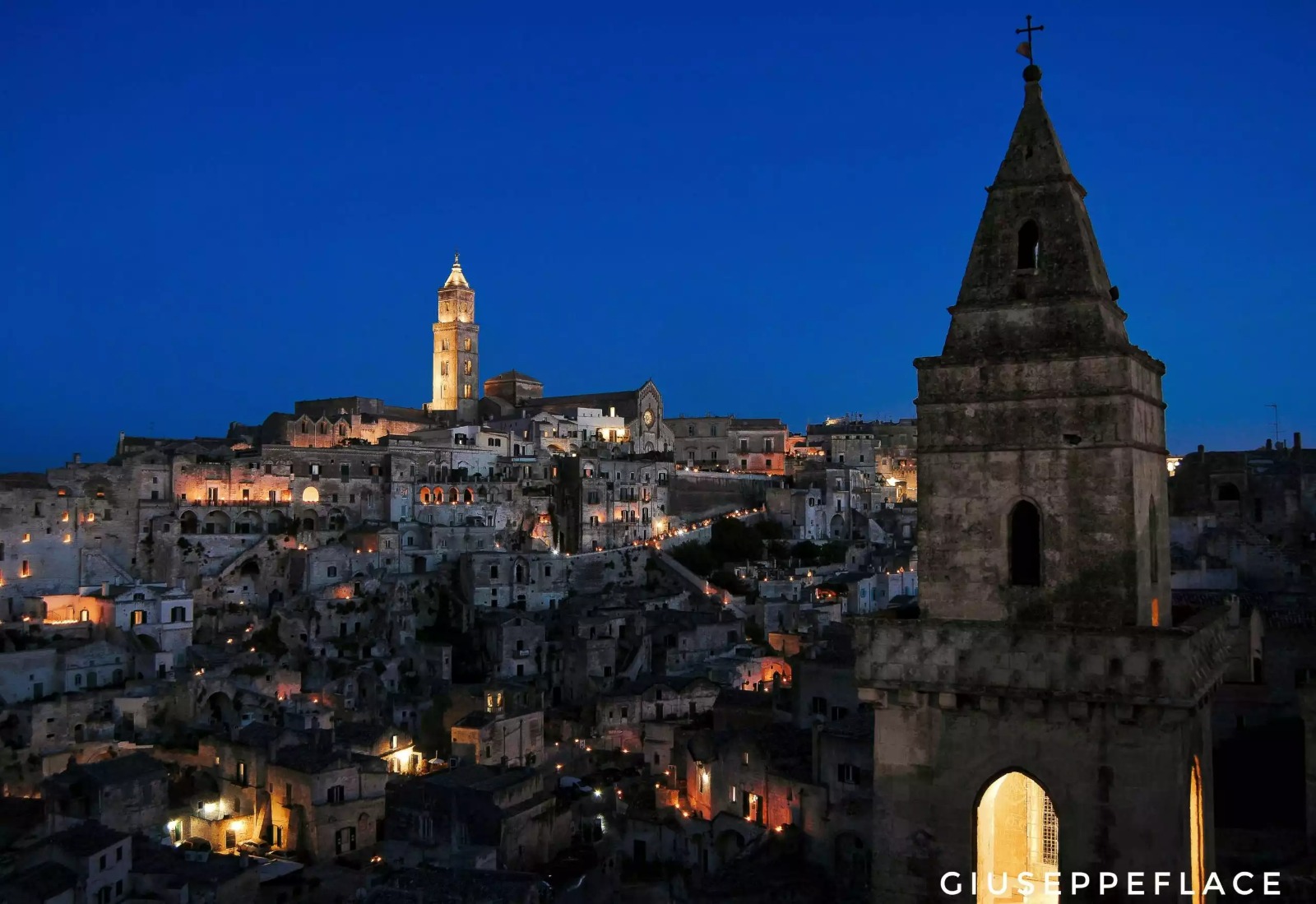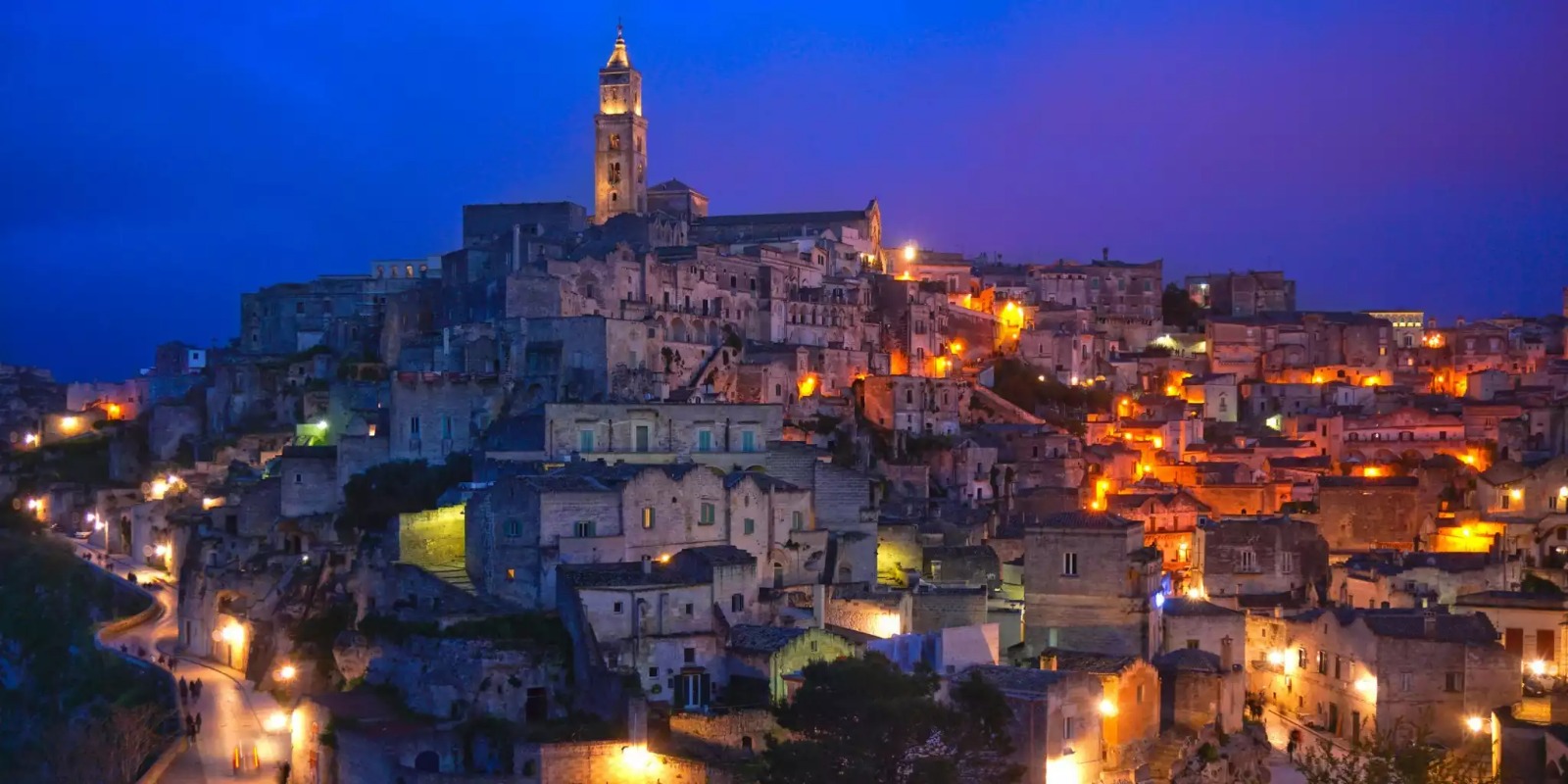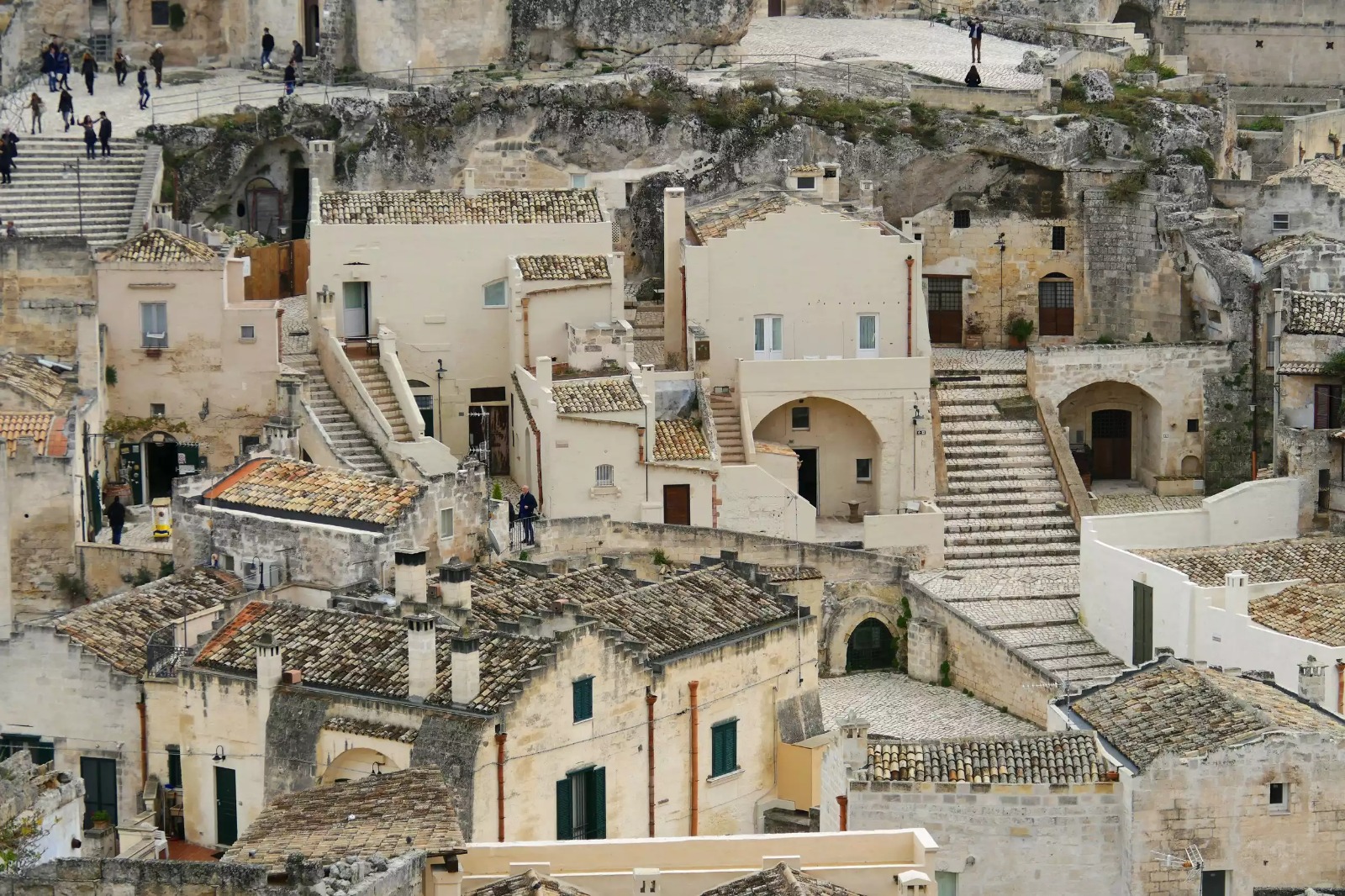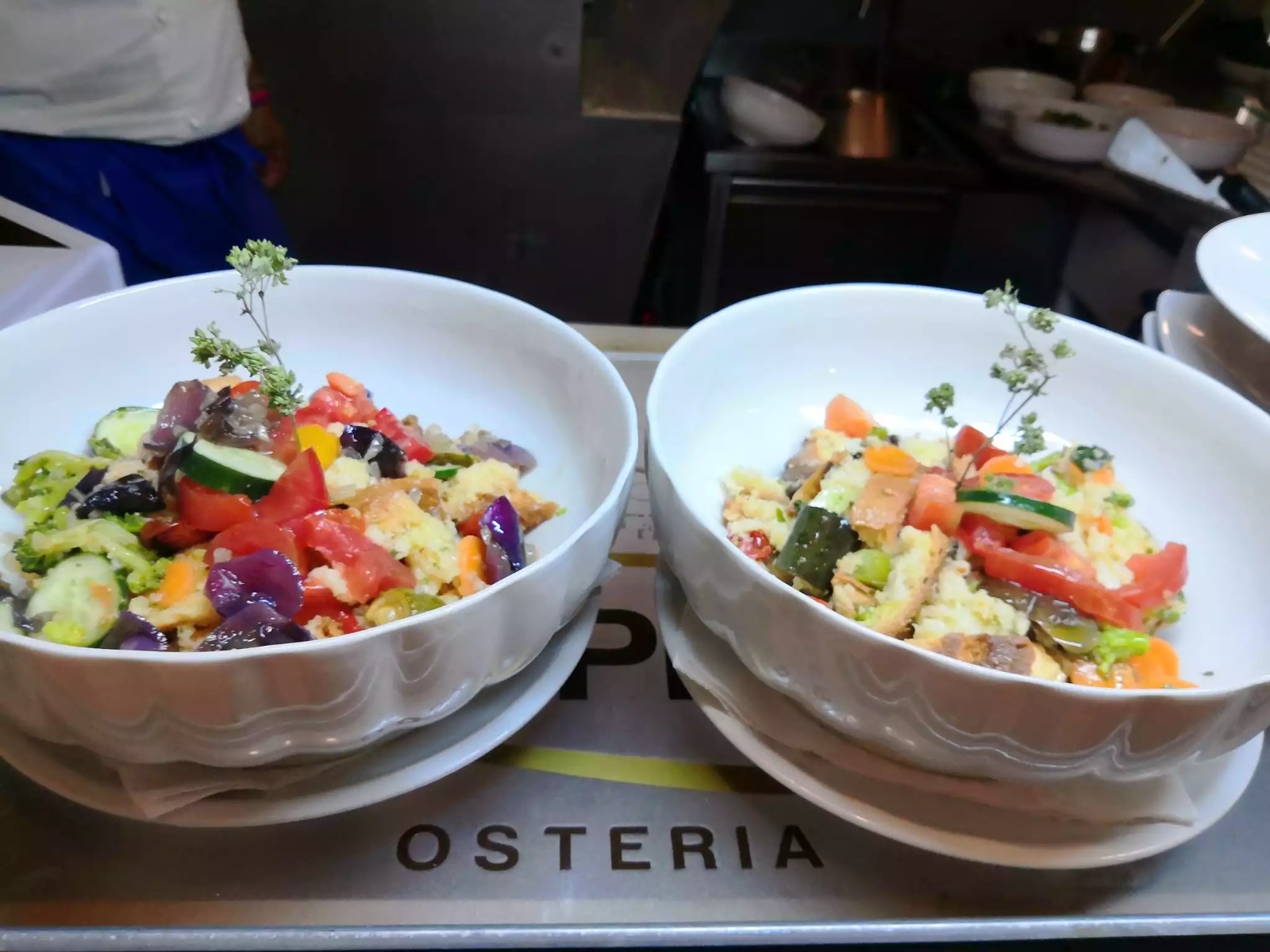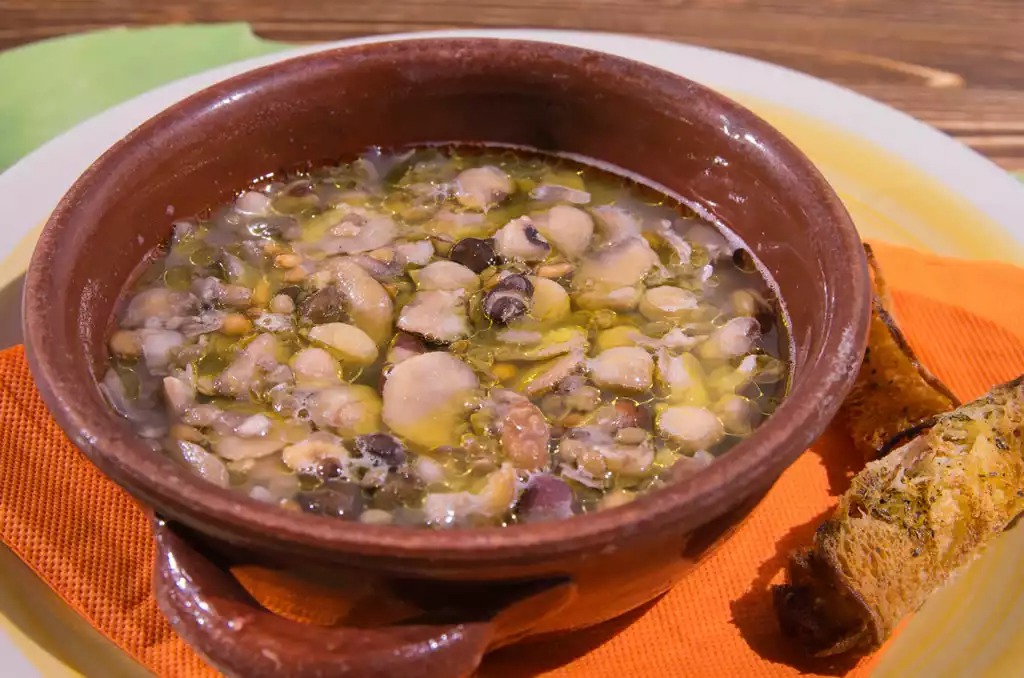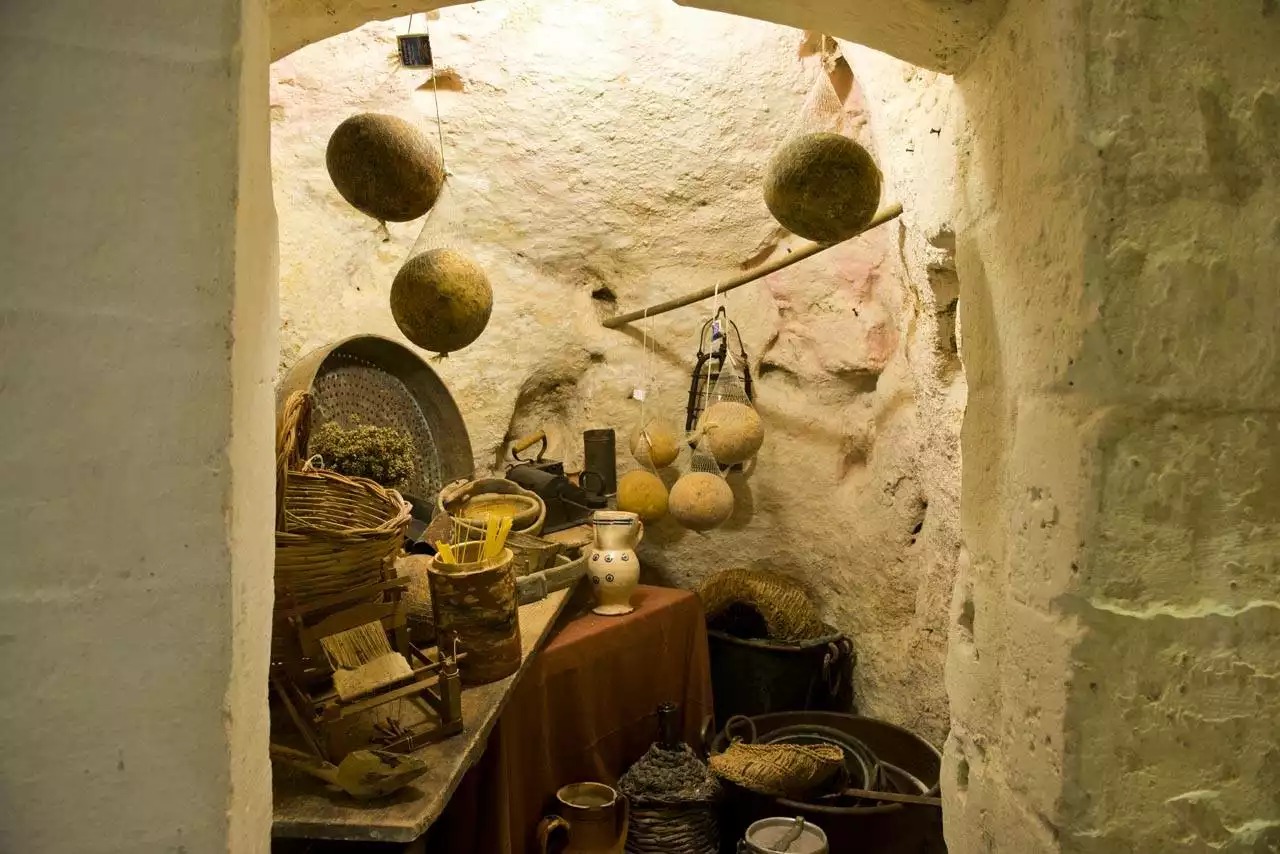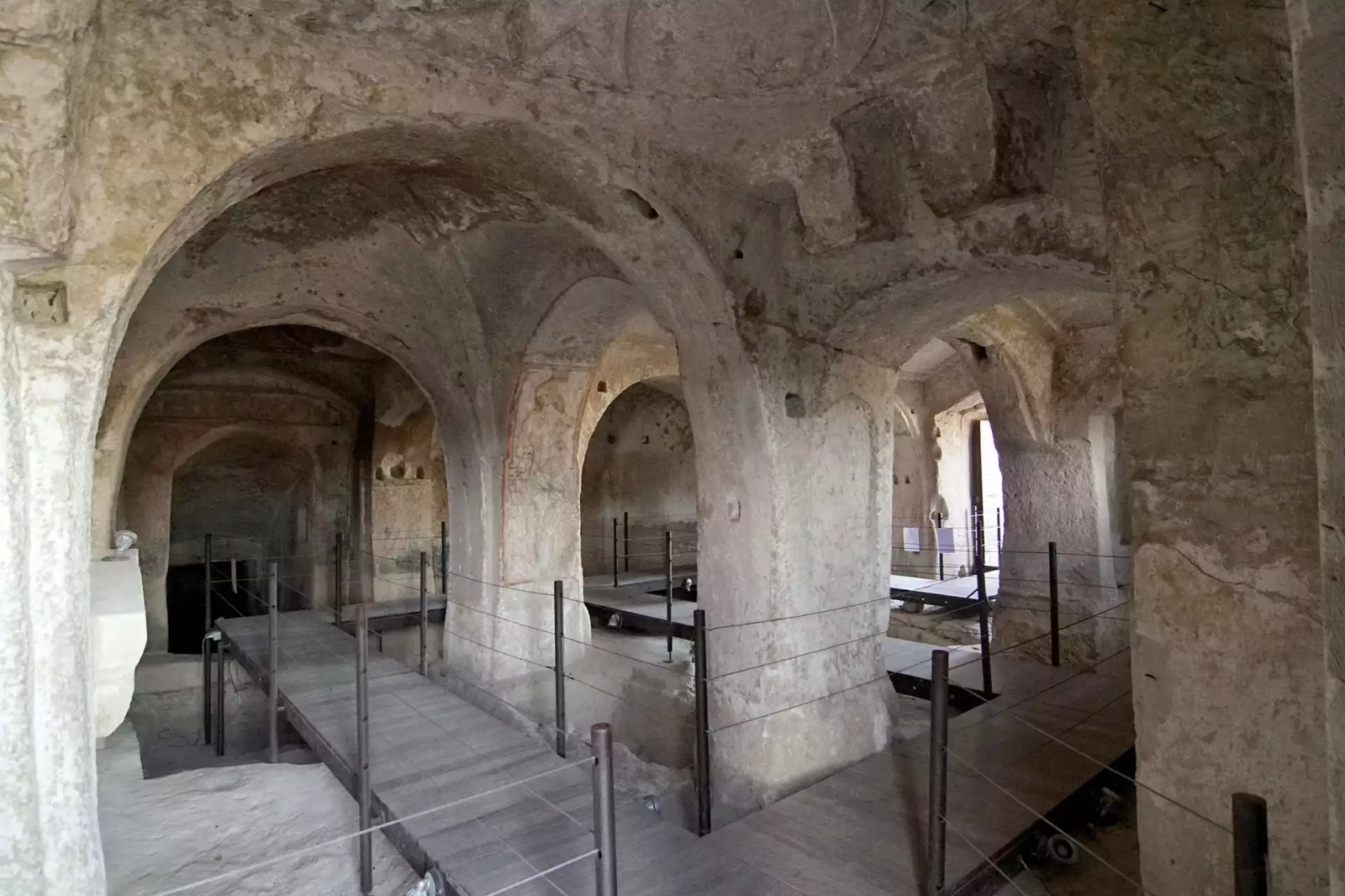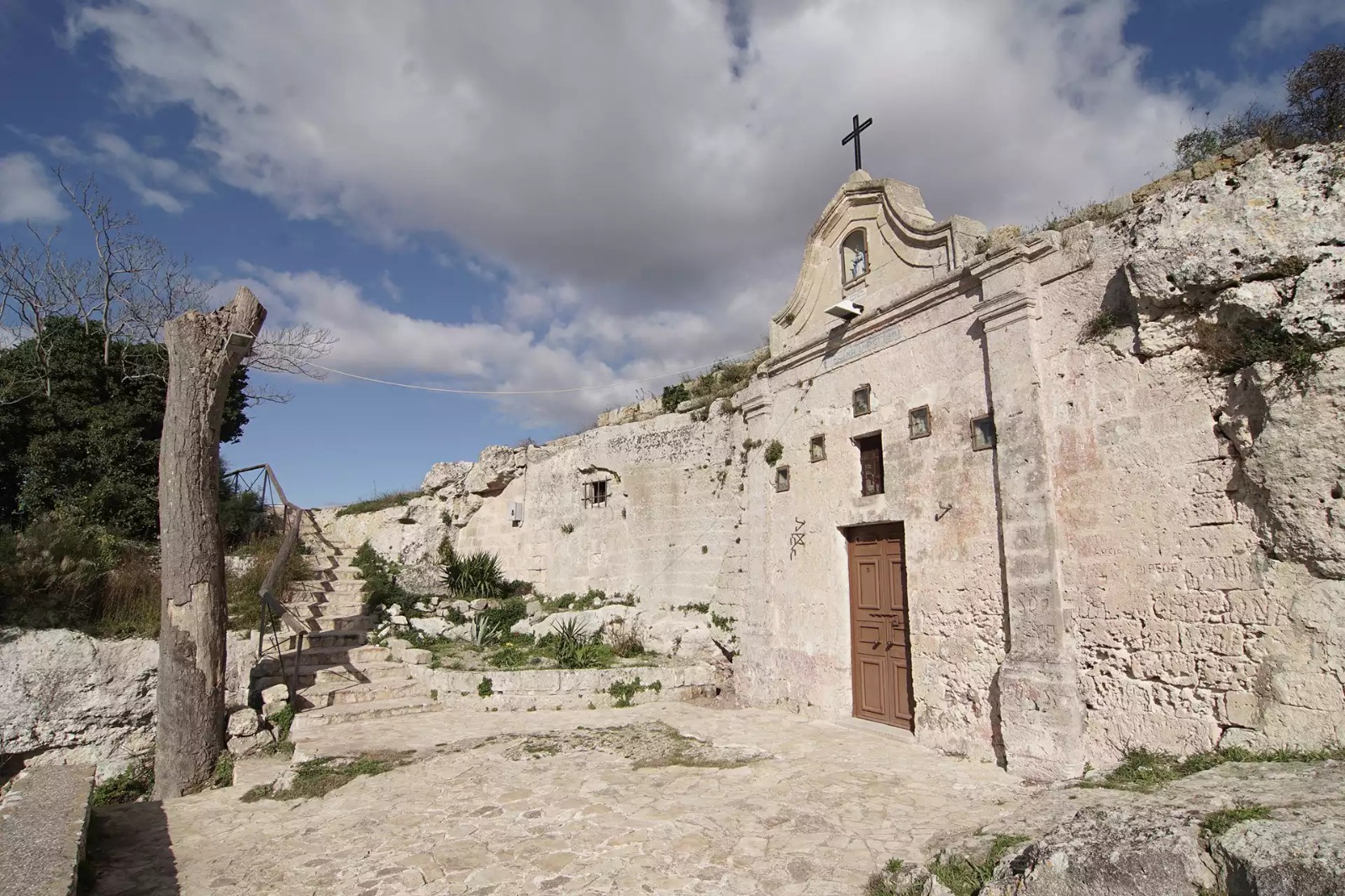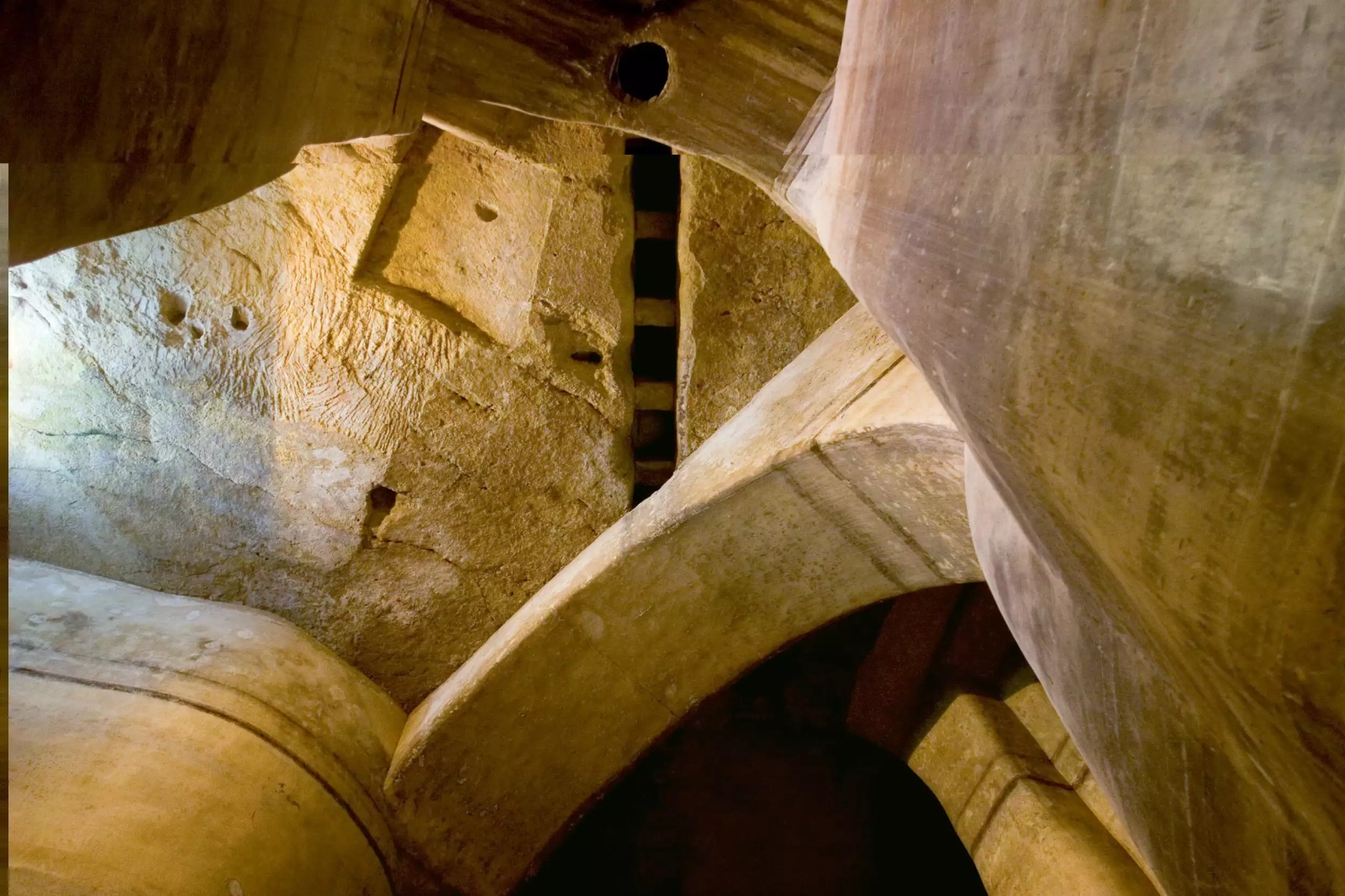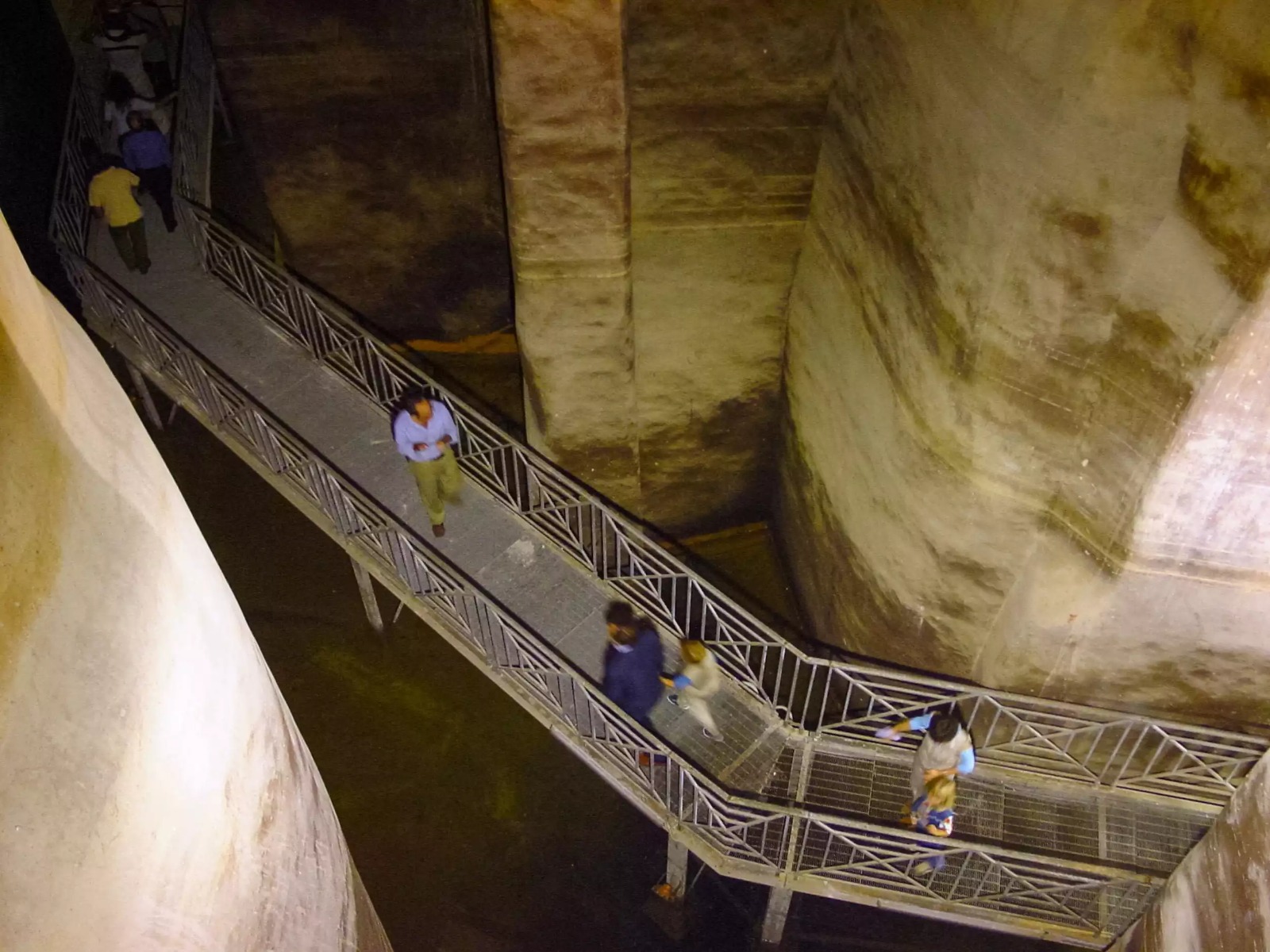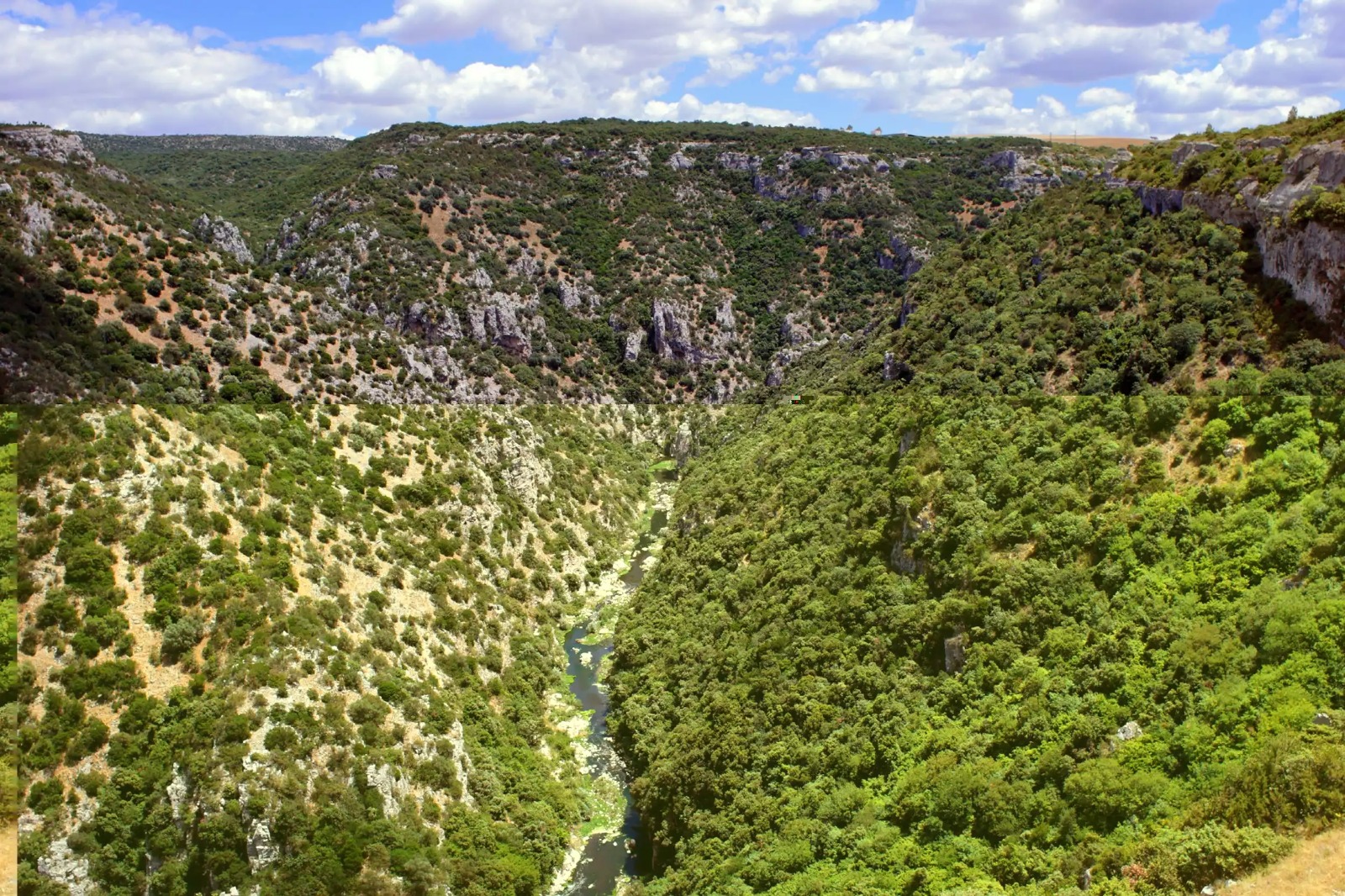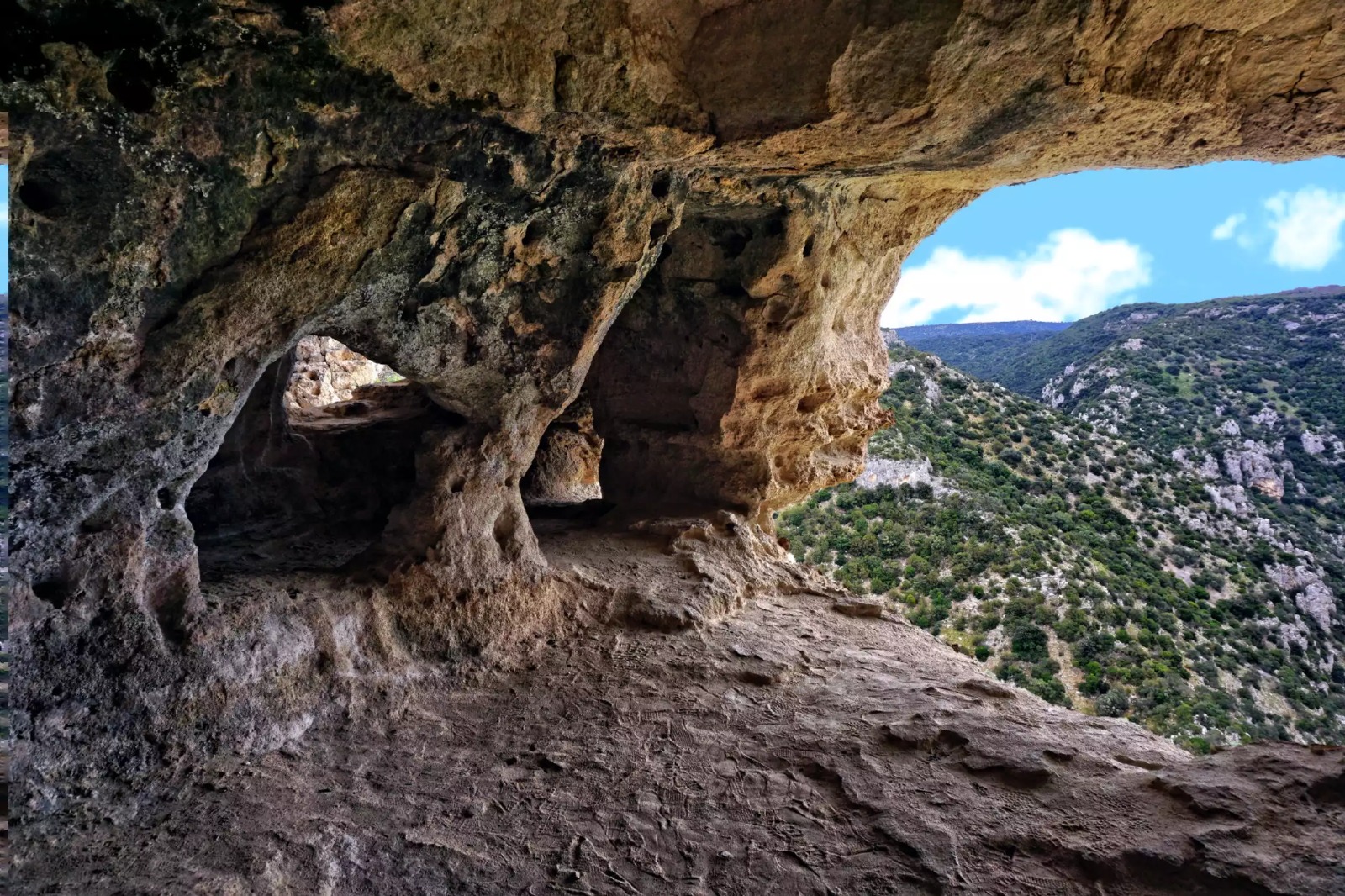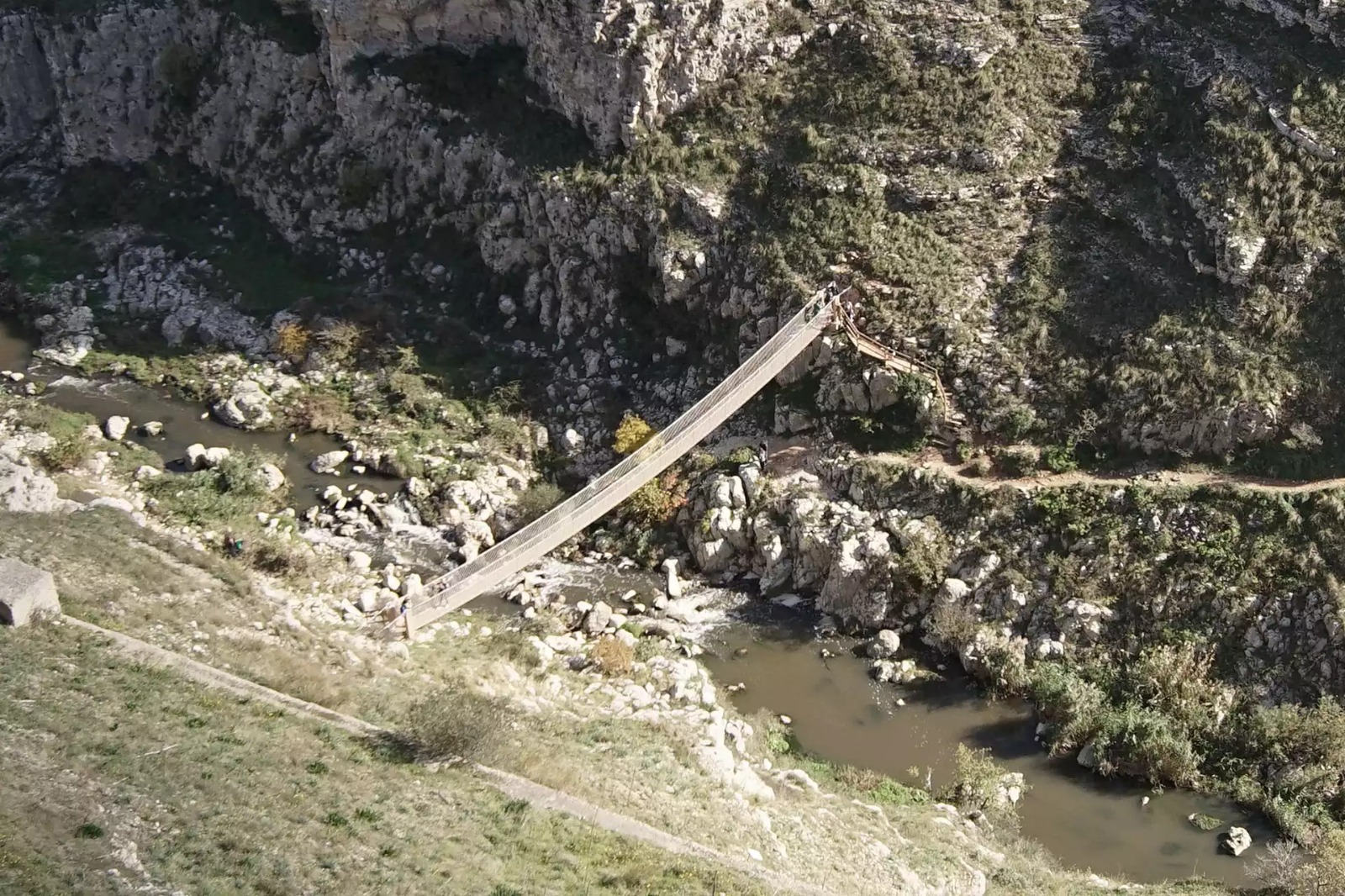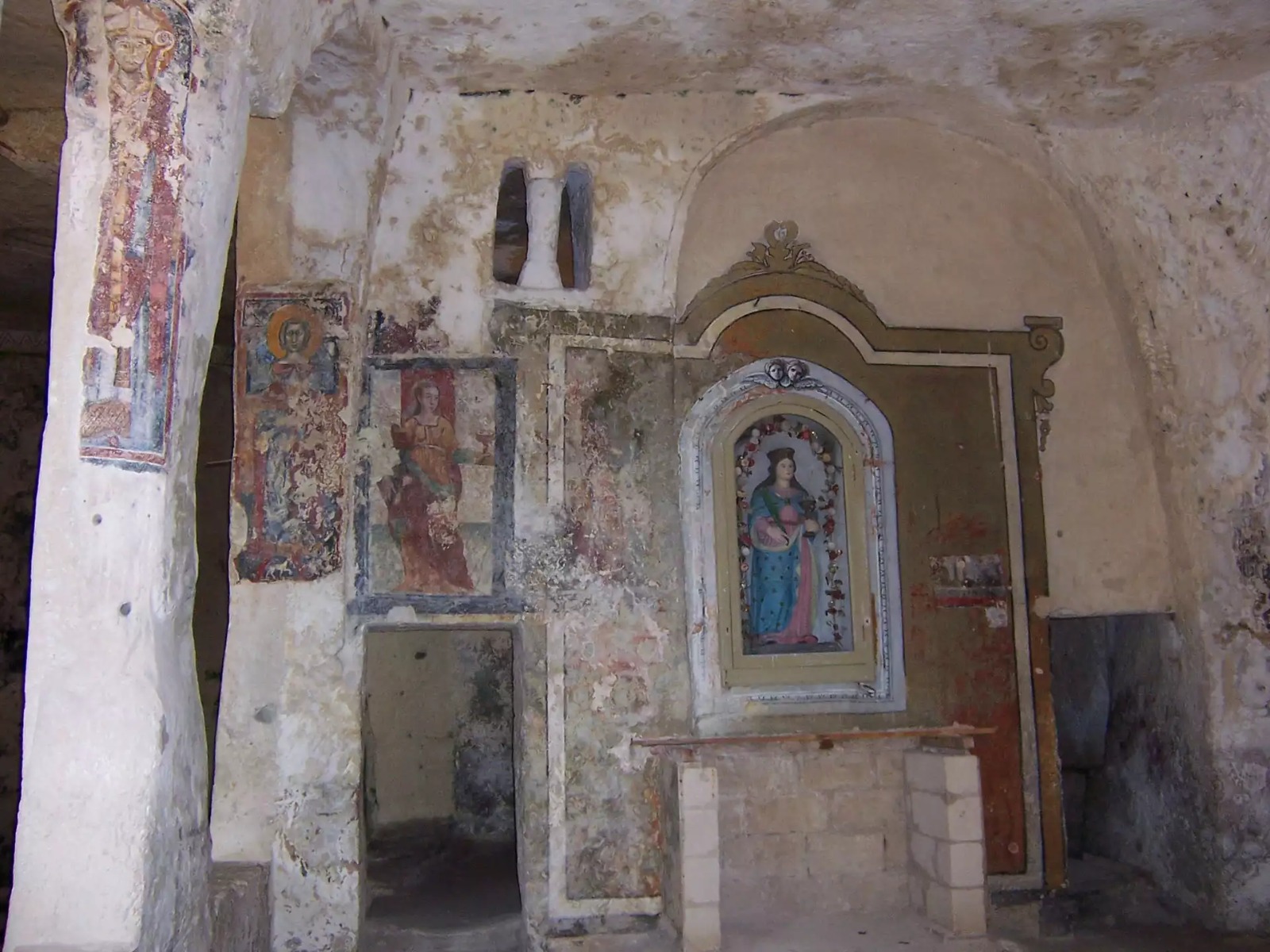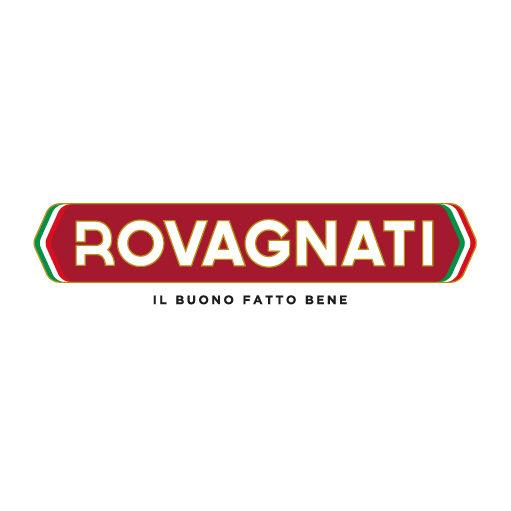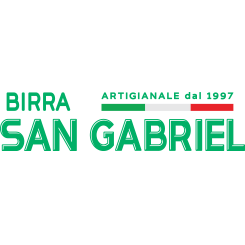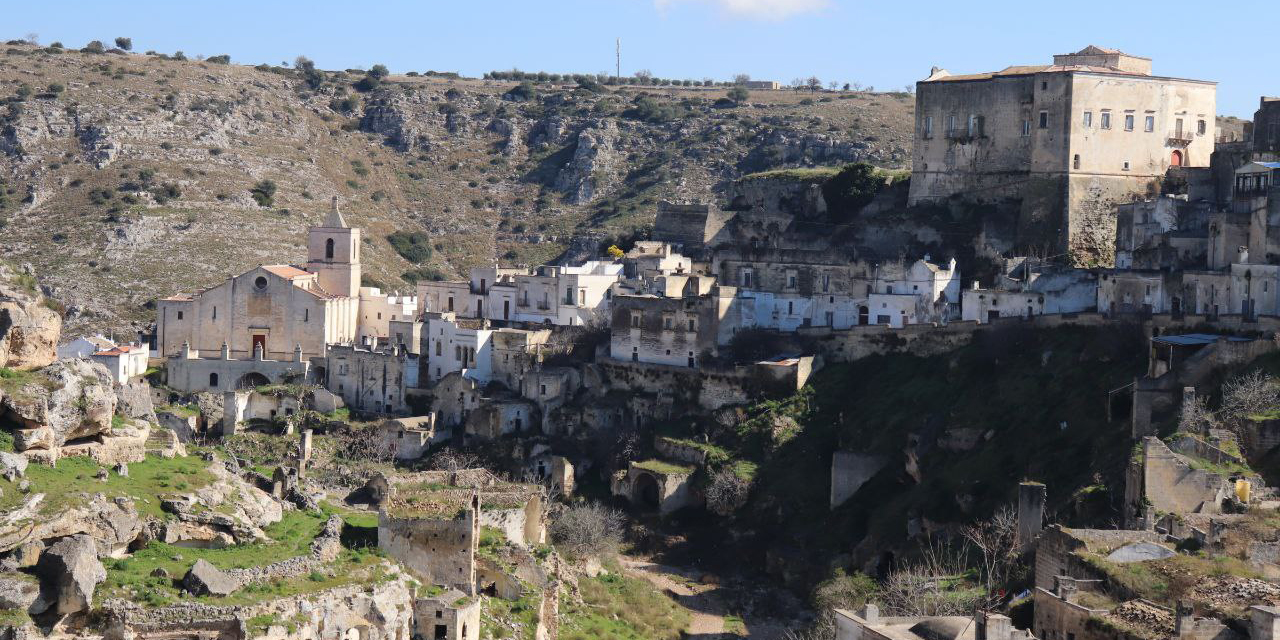
Stage
2
Wednesday 14
May 2025
89,5 km
Altitude gain 1100 mt
Technical Level: Intermediate
Physical Effort: Medium

Ginosa -
Matera
Ginosa - Matera
tourist info
Host city:
Ginosa
Gastronomy
The culinary tradition of Ginosa is rich in authentic flavors, deeply connected to the region’s rural and pastoral culture. Among the typical products, the following stand out:
•Dormento: A soft, bread-like sweet that is distinguished by its long natural leavening process. This traditional preparation, passed down through generations, gives the product a light texture and delicate flavor, making it perfect for breakfast or as a dessert.
•Carne al fornello: One of the most representative specialties of the local gastronomy. It consists of carefully selected meat—often lamb, sausage, or pork “bombette”—cooked in a closed oven heated with oak or olive wood embers. The skewers are arranged vertically, allowing for even cooking that enhances the meat’s flavor, keeping it juicy and aromatic.
•Extra virgin olive oil: A symbol of the Mediterranean diet, Ginosa’s olive oil stands out for its excellent quality, achieved through the cultivation of centuries-old olive trees and cold-extraction techniques that preserve its organoleptic properties. The result is a fruity and well-balanced oil, perfect for enhancing any dish.
•Organic fruits and vegetables: Thanks to its geographical position and favorable climate, Ginosa is ideal for cultivating high-quality produce. A focus on sustainability and organic farming ensures genuine foods rich in flavor and nutrients.
Wine and beverage
Primitivo DOC wine: The hilly area of Ginosa falls within the Denominazione di Origine Controllata (DOC) region for Primitivo, an intense and full-bodied red wine known for its fruity and spicy notes. Highly appreciated both nationally and internationally, this wine pairs perfectly with traditional local dishes, especially grilled meats and aged cheeses.
Points of interest
Ginosa is a land rich in history, nature, and architectural beauty. Among the most significant sites to visit are:
•Gravina di Ginosa: A spectacular natural canyon that defines the landscape of the area, featuring towering rock walls and ancient rock settlements of great historical value.
•Villaggio Rivolta: An ancient settlement carved into the rock, a testament to past life, offering a fascinating journey back in time.
•The Norman Castle of Ginosa is an imposing fortress located in the town of Ginosa, in Puglia. Built by the Normans in the 12th century, the castle stands on a panoramic hill, offering a spectacular view of the valley below. The structure is characterized by massive walls and towers that testify to its defensive role throughout the centuries. Although much of the castle has fallen into ruin, some significant remains still stand, including a corner tower and parts of the walls, which highlight the historical and strategic importance of the site.
•Rock Churches of Santa Barbara and Santa Sofia: Ancient places of worship carved into the rock, adorned with frescoes and evocative architecture that narrate the religious history of the region.
•Rock Church of Mater Domini: a fascinating example of rock-hewn sacred architecture, nestled in the heart of the San Leonardo district, near the Gravina. This religious site represents a valuable historical and cultural heritage for the local community. After a careful restoration, the church has regained its former splendor.
•Historic Center and Chiesa Madre: Strolling through the historic center of Ginosa means immersing yourself in a timeless atmosphere, among characteristic alleys, historic buildings, and the splendid Chiesa Madre, the spiritual heart of the community.
•Beaches and Pine Forests: The coastline of Marina di Ginosa offers vast golden beaches and refreshing Mediterranean pine forests, perfect for relaxing and enjoying the crystal-clear sea.
•Torre Mattoni and Lago Salinella: Two natural treasures that enrich the coastal landscape: Torre Mattoni, an ancient defensive structure, and Lago Salinella, a wetland of great ecological and wildlife interest.
With its unique blend of culture, nature, and gastronomy, Ginosa is an ideal destination for those seeking to experience the authentic essence of Apulia in all its shades.
Matera
Overview
Matera, in Basilicata, is globally celebrated for its Sassi, namely ancient cave dwellings carved into the rock and a UNESCO World Heritage Site. These unique structures provide an unparalleled experience of history and architecture. The rock-hewn churches, adorned with remarkable frescoes, are artistic treasures. The Ridola Civic Museum, housed in a 16th-century palace, narrates the city’s fascinating past.
Gastronomy
Matera, the city of Sassi and fragrant bread, boasts a culinary tradition deeply rooted in peasant culture, made of simple and genuine ingredients. Among its most representative specialities is the Pane di Matera IGP, a unique bread made exclusively from durum wheat semolina, following an ancient method passed down by local bakers. With its tall, arched shape, known as “a cornetto,” and its golden, crispy crust, this bread is the symbol of Matera’s food heritage.
A dish that enhances stale bread is cialledd, a humble yet flavourful recipe available in two variations: warm, ideal for cold days, and cold, perfect for summer. The dish includes potatoes, onions, Murgia herbs, and sometimes eggs, making it a nutritious meal rich in history. Another staple of local cuisine is crapiata, a hearty legume soup traditionally eaten on the first of August to mark the end of the harvest season, symbolising abundance and sharing. Made with chickpeas, fava beans, lentils, and other local legumes, it reflects the sense of community and the simple, wholesome cooking of Basilicata.
A dish strongly linked to pastoral culture is pignata, a slow-cooked stew of mutton prepared in a terracotta pot with potatoes, onions, celery, tomatoes, and salami. The slow cooking process makes the meat tender and aromatic, bringing out the flavours of the ingredients. Among the baked delights, “Ricco d’olio,” locally known as U Ricchddugghj, stands out. This tall, soft focaccia is rich in extra virgin olive oil and surprisingly topped with sugar, creating a perfect balance between sweet and savoury, making it a truly unique delicacy.
Wine and beverage
Matera’s winemaking and liquor traditions have deep roots in a culture that has enhanced the characteristics of the land to produce bold and distinctive flavours. Among the most prominent wines are Aglianico del Vulture and Greco di Matera, both showcasing the uniqueness of the Lucanian soil.
Aglianico del Vulture, a native grape grown on the volcanic slopes of Mount Vulture, is considered one of Italy’s finest red wines. With its deep ruby-red colour and complex aromas of red fruits, spices, and tobacco, it is a structured and long-lived wine, perfect for pairing with robust Lucanian dishes such as grilled meats and aged cheeses. Greco di Matera, on the other hand, is an elegant and mineral white wine produced on the clayey hills of the region. Its bouquet, rich in citrus and floral notes, makes it an excellent match for fish dishes, vegetables, and fresh cheeses. This grape variety, dating back to the Greek colonisation of southern Italy, encapsulates the brightness and freshness of Matera’s terroir.
Alongside wines, another emblematic beverage of Basilicata, highly appreciated in Matera, is Amaro Lucano, created in the late 19th century in Pisticci, near Matera. This herbal liqueur is known for its balanced blend of bitter and sweet notes, making it an excellent digestif. Its secret recipe, passed down through generations, gives Amaro Lucano a unique and enveloping taste, perfect to be enjoyed neat, over ice, or as a base for bold-flavoured cocktails.
Points of interest
Matera, a city with a millennia-old history, is famous for its Sassi, ancient cave districts carved into the rock and recognised as a UNESCO World Heritage Site in 1993. The two main districts, Sasso Caveoso and Sasso Barisano, offer a one-of-a-kind landscape, where cave dwellings blend seamlessly with the natural surroundings. This urban settlement, among the oldest in Europe, is a remarkable example of human habitation that has evolved along the Appian Way since prehistoric times.
A distinctive feature of the Matera area is the presence of rock-hewn churches, which stand as extraordinary religious and artistic heritage. Found throughout the Sassi and the Murgia Materana Park, these churches were often also used for burial purposes, as evidenced by numerous tombs carved into the rock. Among the most fascinating are the Church of Santa Lucia alle Malve, adorned with splendid Byzantine frescoes, and the Madonna delle Vergini Church, featuring a Baroque façade and an interior carved into the rock.
A site of great interest is the Convicinio di Sant’Antonio, a complex of medieval rock churches that were converted into wine cellars in the 17th century. Here, precious frescoes depict religious scenes and saints, including Saint Donato and the Madonna of Picciano.
Among the underground marvels is the Palombaro Lungo, a monumental cistern beneath Piazza Vittorio Veneto, capable of holding up to five million litres of water. Built between the 16th and 17th centuries, it represents a masterpiece of hydraulic engineering, with walls coated in waterproof cocciopesto plaster.
Finally, the Murgia Materana Park offers breathtaking landscapes filled with trails, ravines, and archaeological sites. Covering approximately 8,000 hectares, it is an ideal place for hiking or cycling, allowing visitors to discover prehistoric caves, fortified farmsteads, and an exceptional biodiversity.


